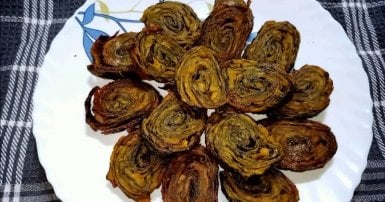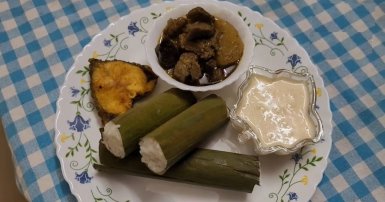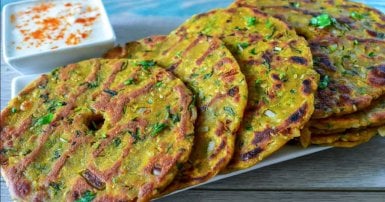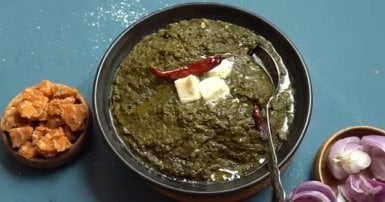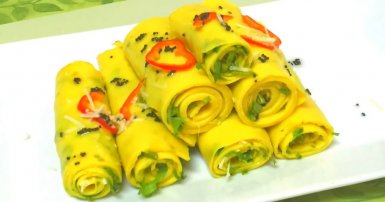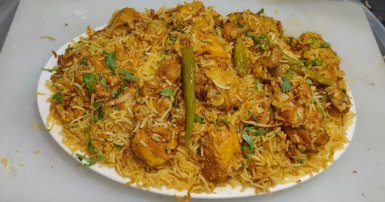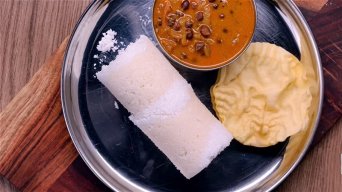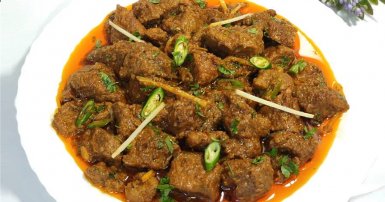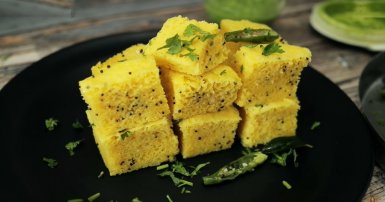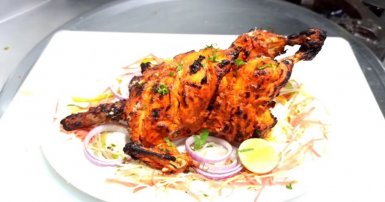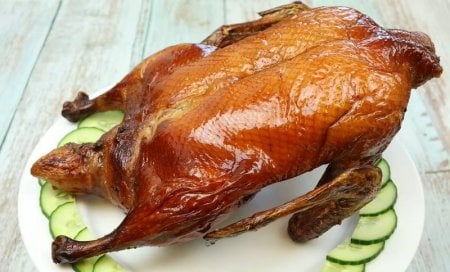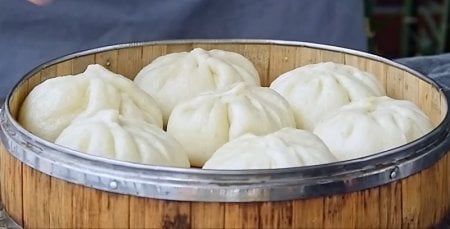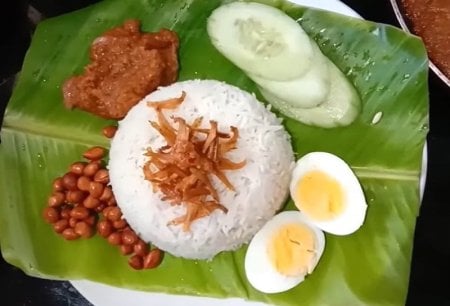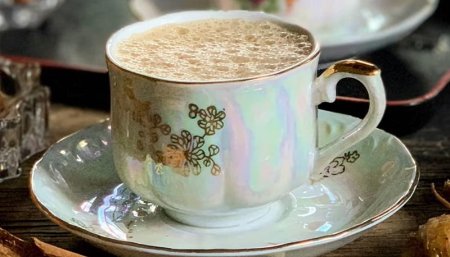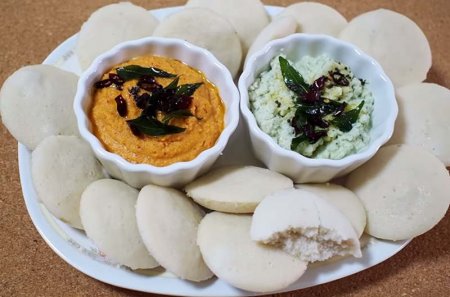North Indian cuisine is a vibrant tapestry of culinary delights, renowned for its rich flavors, diverse ingredients, and intricate preparation methods. Stretching across states like Punjab, Uttar Pradesh, Rajasthan, and beyond, this cuisine reflects the cultural diversity and culinary heritage of the region. At the heart of North Indian cuisine lies a mastery of spices, with dishes featuring a harmonious blend of aromatic spices such as cumin, coriander, turmeric, and garam masala. From creamy curries like butter chicken and paneer tikka masala to savory snacks like samosas and pakoras, each dish offers a sensory journey through the region's gastronomic landscape. Bread, particularly varieties like naan, roti, and paratha, is a staple accompaniment, perfect for soaking up the flavorful gravies and sauces. Tandoori cooking, where meats and vegetables are marinated in a spiced yogurt mixture and cooked in a clay oven, is another hallmark of North Indian cuisine, adding a smoky depth to dishes. With its blend of robust flavors, diverse ingredients, and centuries-old culinary traditions, North Indian cuisine continues to captivate palates around the globe, inviting diners on a gastronomic adventure through the heart of India.
Biryani
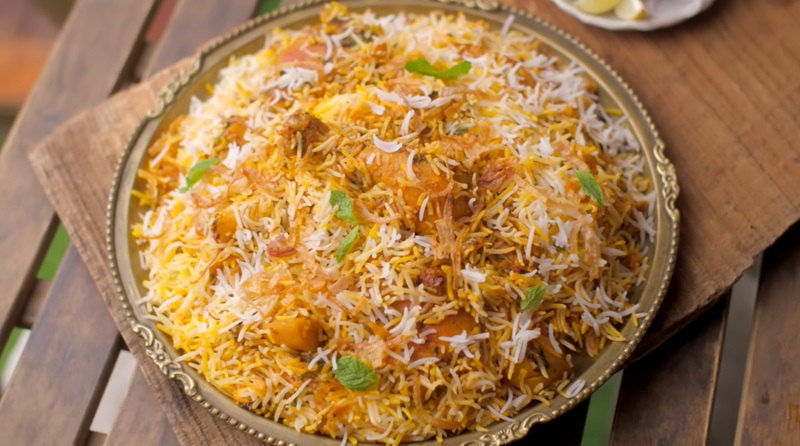
Biryani is a popular and aromatic rice dish in North India. It is a perfect blend of fragrant basmati rice, succulent meat (such as chicken, mutton, or fish), and a tantalizing mix of spices. The dish is cooked in layers, with each layer adding its own unique flavor to the final product. The preparation of biryani involves marinating the meat with a mixture of yogurt and spices, which ensures that the flavors penetrate deep into the meat. The rice is parboiled separately and then layered with the marinated meat, caramelized onions, and a generous amount of ghee. Fragrant spices like cinnamon, cardamom, cloves, and bay leaves are added to enhance the aroma. The entire dish is then sealed with a tight-fitting lid and slow-cooked on low heat, allowing the flavors to infuse and the rice to become fluffy and fragrant. The result is a delectable dish that is rich in taste and visually appealing. Biryani is often served with raita (a yogurt-based side dish) and a flavorful gravy or curry.
Chicken Tikka Masala
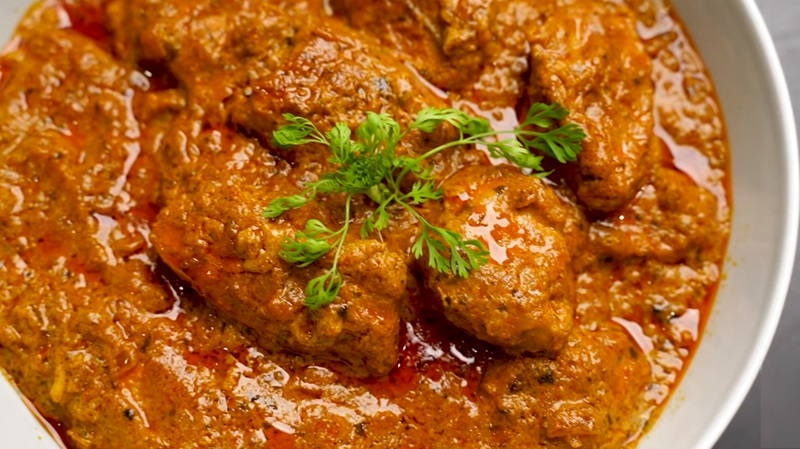
Chicken tikka masala is a popular and flavorful dish. It consists of succulent pieces of boneless chicken marinated in a spiced yogurt mixture and cooked to perfection. The chicken is usually grilled or baked until it is slightly charred and tender. The highlight of this dish is the rich and creamy tomato-based sauce. It is made by sautéing onions, garlic, and ginger in oil until they are fragrant and golden brown. Then, a blend of spices like cumin, coriander, turmeric, and garam masala is added to enhance the flavors. The tomato puree is then added, along with other ingredients like cream and yogurt, to create a smooth and velvety sauce. Once the sauce is ready, the grilled chicken tikka pieces are added and simmered in it, allowing the flavors to infuse. The result is a dish that is both spicy and tangy, with a hint of sweetness from the tomatoes. It is typically served with naan bread or steamed rice, and garnished with fresh coriander leaves. Chicken tikka masala is loved for its vibrant flavors and comforting taste.
Puri
-1708944065.jpg)
Puri is a delicious and popular dish quite popular in North India. It is a type of deep-fried bread made from whole wheat flour, and it is often served with various accompaniments. The process of making puri involves kneading the dough with water, salt, and a small amount of oil. The dough is then rolled into small, round discs and deep-fried until it puffs up and turns golden brown. The result is a crispy and airy bread that is incredibly satisfying to bite into. Puri is often enjoyed for breakfast or as a part of festive meals. It can be served with a variety of side dishes such as curries, chutneys, pickles, or yogurt. Some popular accompaniments include potato curry (aloo sabzi), chickpea curry (chana masala), or lentil curry (dal). What makes puri so special is its versatility and ability to be enjoyed with both savory and sweet dishes.
Gulab Jamun
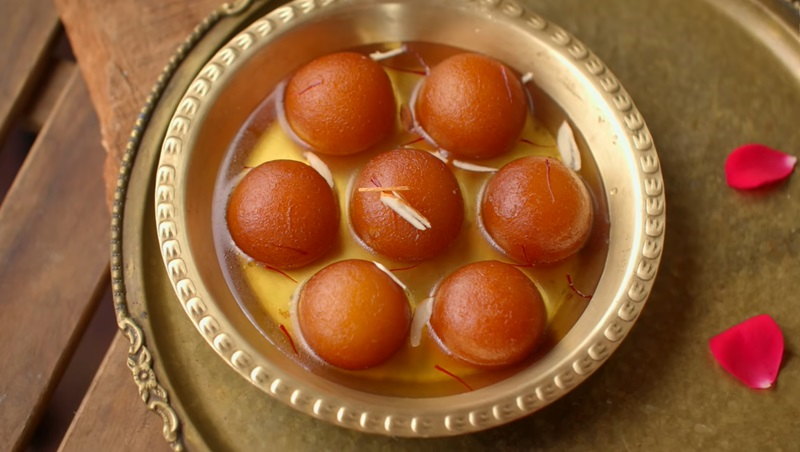
Gulab jamun is a popular sweet dish in North India. It is enjoyed all over the country and beyond. It is a delectable dessert made from deep-fried dough balls that are soaked in a fragrant sugar syrup. The name "Gulab jamun" is derived from two words: "Gulab," which means rose, and "jamun," which refers to a fruit similar in shape to the dessert. The dough for Gulab jamun is made by combining milk powder/condensed milk, all-purpose flour, ghee, and a pinch of baking soda. The mixture is then shaped into small balls and fried until golden brown. Once cooked, the Gulab jamun balls are soaked in a syrup made from sugar, water, rose water, and cardamom for a few hours. This allows the syrup to infuse the dessert with its sweet and aromatic flavors. Gulab jamun is best served warm, and it is often garnished with chopped nuts such as pistachios or almonds. The soft and spongy texture of the dough balls, combined with the sweetness of the syrup, creates a heavenly taste experience. It is a popular dessert during festivals and special occasions in India and is enjoyed by people of all ages.
Butter Chicken
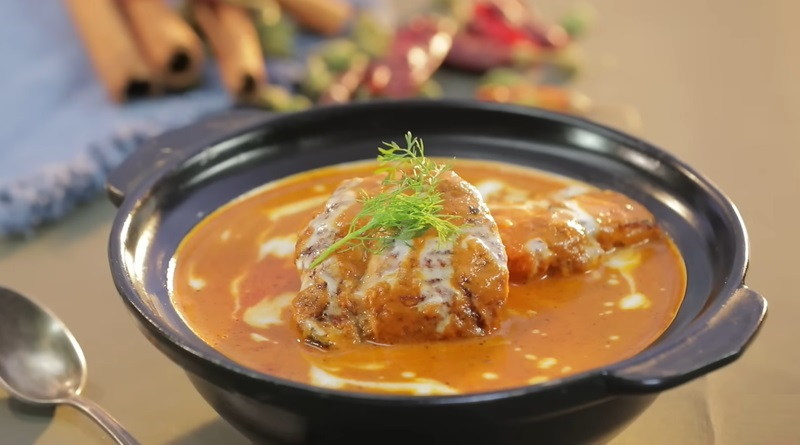
Butter Chicken, a quintessential dish of North Indian cuisine, is a succulent marriage of tender chicken pieces cooked in a creamy, tomato-based sauce. Marinated in a blend of yogurt and spices, the chicken is traditionally roasted or grilled before being simmered in a luscious gravy enriched with butter, cream, and aromatic spices like fenugreek and garam masala. This beloved dish is celebrated for its rich flavor profile, with the buttery smoothness of the sauce complementing the smoky notes of the chicken. Served with rice or naan, Butter Chicken embodies the essence of comfort food, captivating taste buds with its indulgent texture and tantalizing aroma.
Samosa
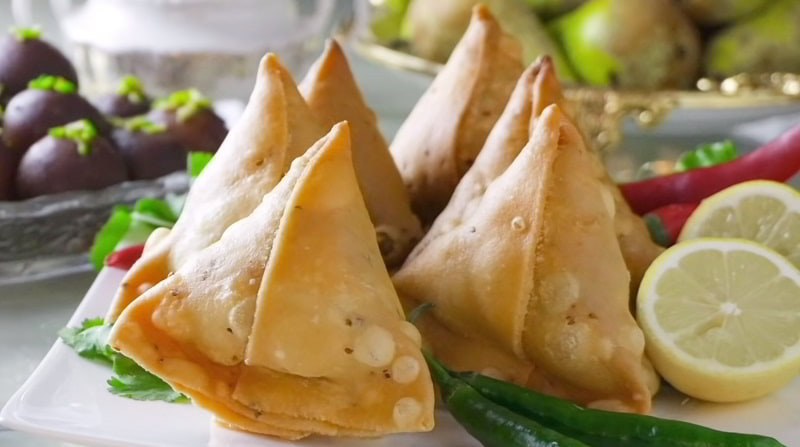
Samosa is a popular North Indian snack and has gained worldwide popularity. It is a triangular-shaped pastry made with a crispy outer layer and a delicious filling. The outer layer is typically made with a mixture of all-purpose flour, water, and oil, which is kneaded into a smooth dough and then rolled out into thin sheets. The filling traditionally consists of a combination of potatoes, peas, onions, and spices such as cumin, coriander, and garam masala. However, there are also various regional variations of samosas, with fillings, including meat, lentils, or even sweet fillings. Once the dough is rolled out, it is cut into small circles or triangles. A spoonful of the filling is then placed in the center of each piece, and the edges are folded over and sealed to form a triangular shape. The samosas are then deep-fried until they become golden brown and crispy. Samosas are typically served hot and are often enjoyed as a snack or appetizer. They are commonly served with tamarind chutney or mint chutney for dipping. The combination of the flaky, crispy outer layer and the flavorful, spiced filling makes samosas a favorite street food and a must-try dish in North Indian cuisine.
Roti
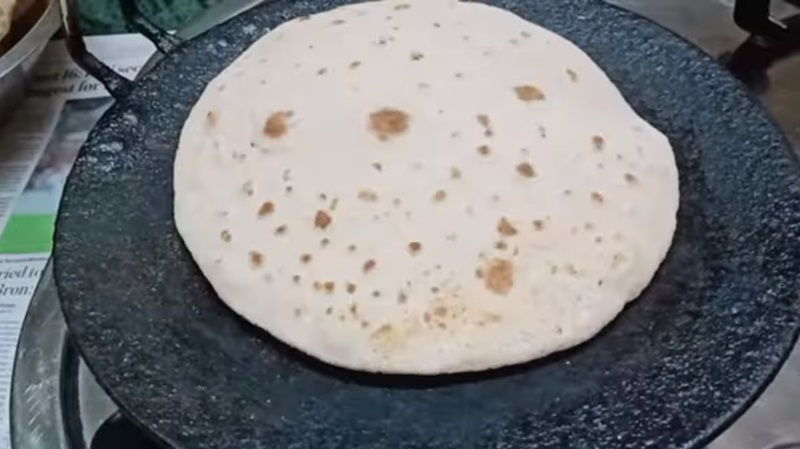
Roti is a staple dish in North Indian cuisine and is a popular choice for many meals. It is a simple yet delicious flatbread made from whole wheat flour, water, and a pinch of salt. The dough is kneaded until smooth and then rolled out into thin circles, which are cooked on a hot griddle called a tawa. Roti is typically served hot and can be enjoyed with a variety of accompaniments. It is often paired with a wide range of curries, such as butter chicken, paneer tikka masala, or dal makhani. The soft and fluffy texture of the roti complements the rich and flavorful curries perfectly. In addition to being a versatile accompaniment, roti is also a healthy option. It is low in fat and cholesterol, making it a great choice for those watching their diet. The whole wheat flour used in making roti is a good source of fiber, which aids in digestion and helps to keep you feeling full for longer. Whether enjoyed at home or in a restaurant, roti is a beloved dish that is sure to satisfy any craving for delicious and wholesome North Indian cuisine.
Besan Laddu
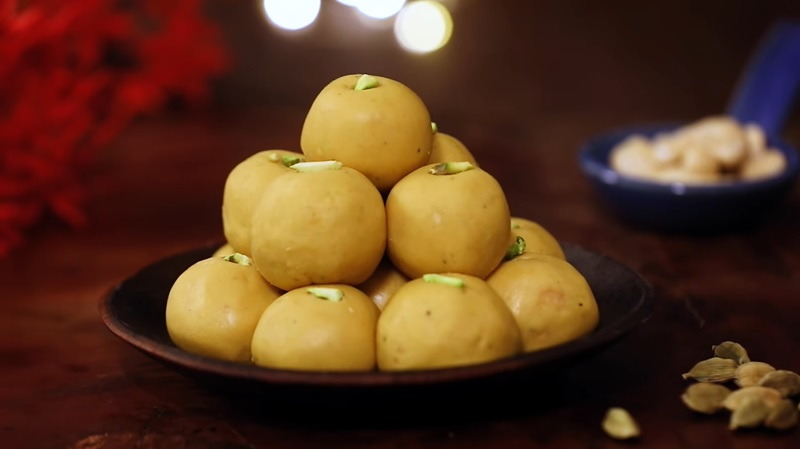
North Indian cuisine is renowned for its rich flavors and diverse range of dishes. One such popular sweet delicacy is Besan Laddu. Laddu, also known as laddoo, is a traditional dessert made from various ingredients, typically shaped into small, round balls. The key ingredient in Laddu is chickpea flour, which is roasted in ghee (clarified butter) until it turns golden brown, giving it a nutty aroma. To this, sugar, cardamom powder, and chopped nuts like almonds, pistachios, and cashews are added. The mixture is then shaped into small balls while it is still warm. Laddu is loved for its melt-in-the-mouth texture and sweet taste. It is often served as prasad (offering) in temples and during religious festivals like Diwali and Ganesh Chaturthi. Laddu is also a popular celebratory sweet, served at weddings and other special occasions. Variations of Laddu can be found across North India, with each region adding its own twist to the recipe. Some popular variations include coconut laddu, motichoor laddu (made from fine boondi), and til laddu (made from sesame seeds).
Tandoori Chicken
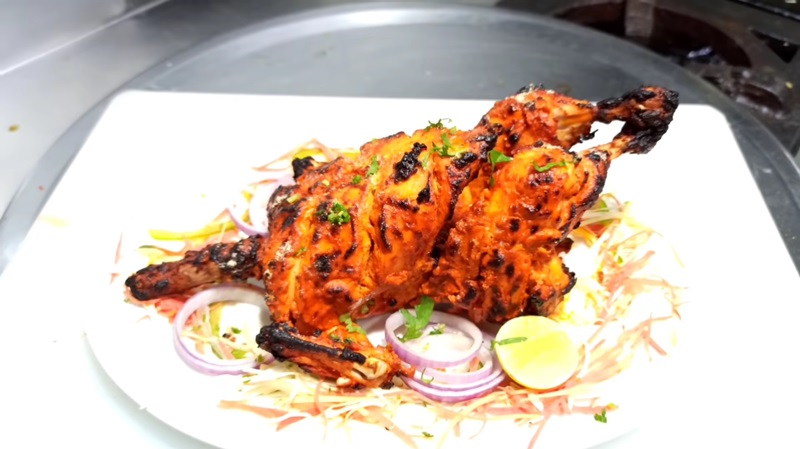
Tandoori chicken is a popular dish in North Indian cuisine that is known for its vibrant flavors and aromatic spices. This dish is prepared by marinating chicken pieces in a mixture of yogurt, lemon juice, garlic, ginger, and a blend of spices such as cumin, coriander, turmeric, and red chili powder. The marinated chicken is then traditionally cooked in a tandoor, which is a clay oven, giving it a smoky and charred flavor. The tandoori chicken is known for its distinctive red color, which comes from the addition of red food coloring or natural ingredients like Kashmiri red chili powder. The yogurt in the marinade helps tenderize the chicken and gives it a tangy taste. Once cooked, the tandoori chicken is served hot and garnished with a sprinkle of chaat masala and freshly chopped coriander leaves. It is commonly enjoyed with naan bread, mint chutney, and a side of salad. The smoky and succulent flavors of tandoori chicken make it a favorite choice for both casual meals and special occasions. Overall, tandoori chicken is a delicious and versatile dish that beautifully showcases the rich and bold flavors of North Indian cuisine.
Chaat
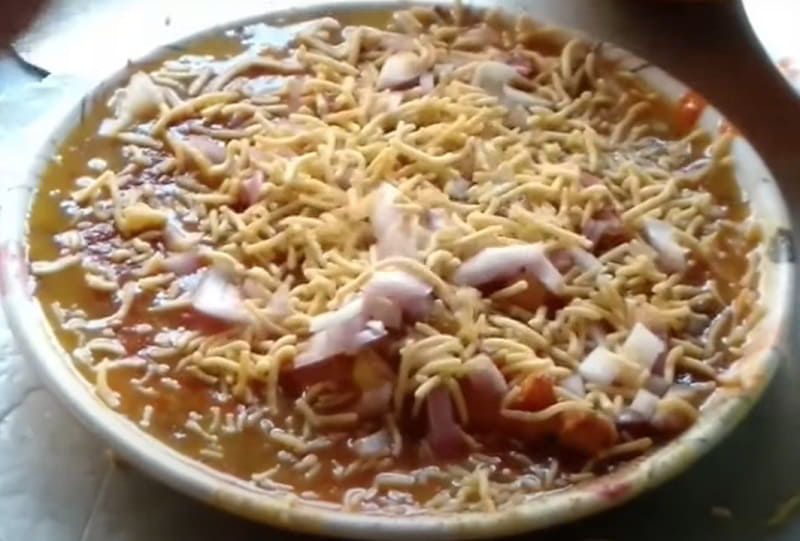
North Indian cuisine is renowned for its vibrant and diverse flavors, and one dish that perfectly encapsulates this is the beloved Chaat. Chaat is a popular street food that is both savory and tangy, featuring a delightful combination of various ingredients. The foundation of Chaat is typically a base of crispy puris (deep-fried, hollow bread), which are then topped with a variety of chutneys, yogurt, and spices. The toppings can include boiled potatoes, chickpeas, onions, tomatoes, and a mix of aromatic spices like chaat masala, cumin, and black salt. The dish is then garnished with fresh coriander leaves and a squeeze of lemon juice for added zest. What makes Chaat truly unique and irresistible is the contrasting textures and flavors it offers. The crunch of the puris complements the softness of the potatoes and chickpeas, while the tangy chutneys and yogurt add a burst of freshness. The combination of sweet, sour, and spicy flavors creates a harmonious balance that leaves taste buds craving for more. Chaat is not just a snack but also a social experience, often enjoyed with friends and family. It is commonly found at street food stalls or Chaat shops throughout North India, where the aroma and sizzle of the preparation draw people in. In conclusion, North Indian Chaat is a delectable dish that tantalizes the senses with its medley of flavors and textures. It is a must-try for those seeking an authentic and unforgettable taste of India.
Paratha
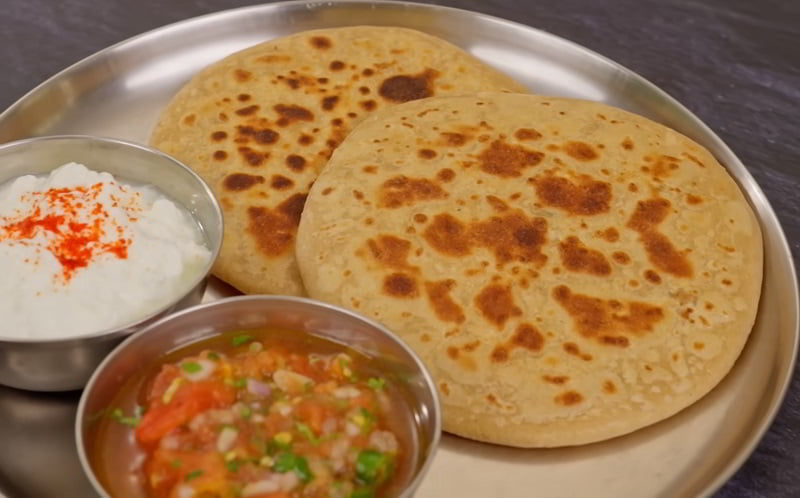
Paratha is a popular and delicious dish in North Indian cuisine. It is a type of flatbread that is made using whole wheat flour, ghee (clarified butter), and water. The dough is kneaded until it becomes soft and pliable, and then rolled into round discs. The parathas are cooked on a griddle or tawa with a generous amount of ghee, which gives them a crispy and flaky texture. They are often stuffed with a variety of fillings, such as spiced potatoes, paneer (Indian cottage cheese), or even minced meat. Parathas are typically served hot, straight off the griddle, and are accompanied by a side of yogurt, pickles, or chutneys. They can be enjoyed as a breakfast item, a snack, or as part of a main meal. What makes parathas even more special is the wide range of flavors and variations they offer. From plain parathas to ones filled with spinach, fenugreek, or even shredded radish, the possibilities are endless. Each variation has its own distinct taste and adds a unique touch to the overall dish. In conclusion, parathas are a beloved and versatile dish in North Indian cuisine. They are loved for their crispy texture, flavorful fillings, and ability to be enjoyed at any time of the day.
Rogan Josh
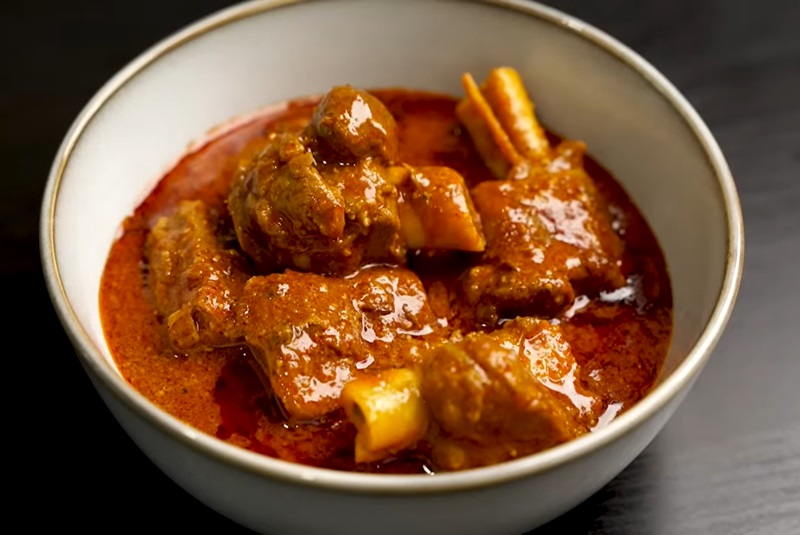
Rogan josh is a traditional North Indian dish that originated in the Kashmir region. It is a flavorful and aromatic dish that is typically made with tender pieces of meat, such as lamb or goat, cooked in a rich and spicy gravy. The name "rogan josh" translates to "red juice" in Persian, which refers to the vibrant red color of the gravy. The dish is made by marinating the meat in a mixture of yogurt and spices like ginger, garlic, and Kashmiri red chili powder. The meat is then cooked slowly in a blend of onions, tomatoes, and a variety of aromatic spices like cloves, cardamom, cinnamon, and bay leaves. This slow cooking process allows the flavors to meld together and results in a tender and succulent meat. Rogan josh is known for its intense and robust flavors. It has a perfect balance of heat from the spices and richness from the yogurt and meat. It is often garnished with fresh coriander leaves and served with naan or rice, making it a hearty and satisfying meal. Overall, rogan josh is a beloved dish in North Indian cuisine, known for its bold flavors and comforting qualities. It is a must-try for anyone looking to experience the authentic flavors of the region.
Lassi
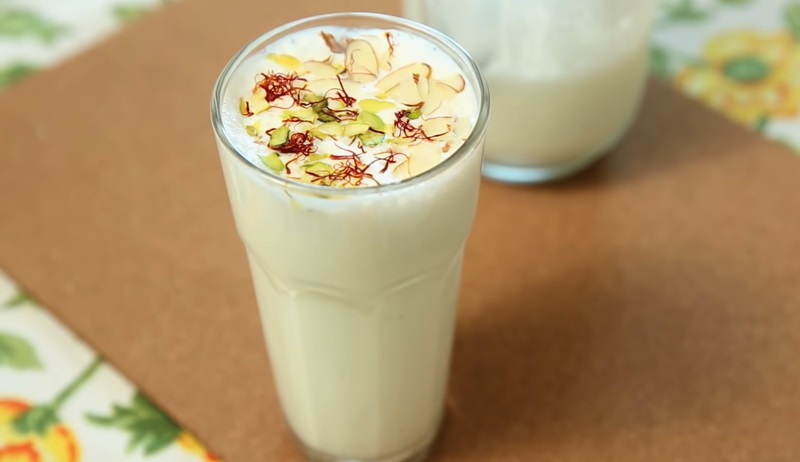
Lassi is a traditional yoghurt-based drink that originates from North India. It is a popular and refreshing beverage consumed during the hot summer months. Lassi is made by blending yoghurt, water, and a dash of sugar or salt, depending on personal preference. It is often flavored with ingredients such as mango, rose, or saffron to enhance its taste. Lassi is known for its creamy and smooth texture, which is achieved by churning the yoghurt before adding water. It is traditionally served in tall glasses and garnished with a sprinkle of ground cardamom or chopped nuts. The drink is not only delicious but also offers several health benefits. Yoghurt, the main ingredient of lassi, is rich in probiotics, which promote a healthy gut. It is also a good source of calcium and protein. Lassi is enjoyed as a standalone drink or alongside meals. It is believed to aid digestion and cool the body, making it a perfect accompaniment to spicy North Indian dishes. Lassi is a beloved beverage that showcases the rich culinary heritage of North Indian cuisine.
Kulfi
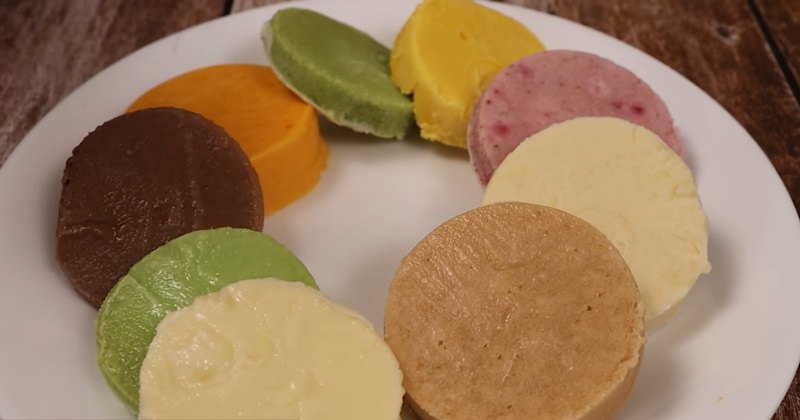
Kulfi is a popular frozen dessert that originates from North India and is loved by people all over the world. It is a creamy and rich dish similar to ice cream but with a distinct texture and flavor. The main ingredients of Kulfi include milk, sugar, and various flavors such as saffron, cardamom, pistachio, or mango. The process of making Kulfi involves simmering milk for hours until it reduces and thickens to a creamy consistency. The addition of sugar and flavors enhances the taste, making it a delightful treat. The mixture is then poured into molds or small earthen pots and frozen until it solidifies. Kulfi is known for its unique texture, which is denser and creamier compared to traditional ice cream. It has a luscious mouthfeel and a rich flavor that is both refreshing and indulgent. The addition of nuts or fruit chunks adds a delightful crunch and burst of flavor. Kulfi is often served on a stick or in a bowl, garnished with chopped nuts or a drizzle of rose syrup. It is enjoyed as a dessert after meals or as a refreshing treat on hot summer days. Its popularity is a testament to its delicious taste and the art of Indian culinary traditions.
Nihari
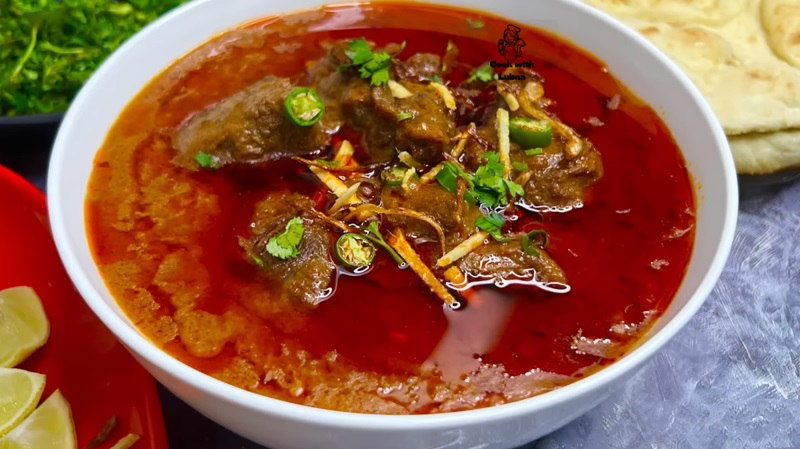
Nihari is a popular and aromatic dish that originated in the North Indian region. It is a slow-cooked meat stew that is traditionally prepared using beef or lamb shanks. The dish is known for its rich and flavorful gravy, which is achieved by slow-cooking the meat along with a blend of spices and herbs. To prepare Nihari, the meat is first marinated with a mixture of ginger, garlic, and a variety of spices such as cloves, cinnamon, and cardamom. It is then cooked on low heat for several hours, allowing the flavors to infuse and the meat to become tender and succulent. The key ingredient that sets Nihari apart is the use of bone marrow, which adds a unique richness and depth of flavor to the dish. The bone marrow is simmered along with the meat, enhancing the texture and taste of the gravy. Nihari is typically served with naan or roti, and garnished with fresh coriander leaves, ginger slices, and a squeeze of lemon juice. It is a dish that is enjoyed during special occasions and is considered a delicacy in North Indian cuisine.
Korma
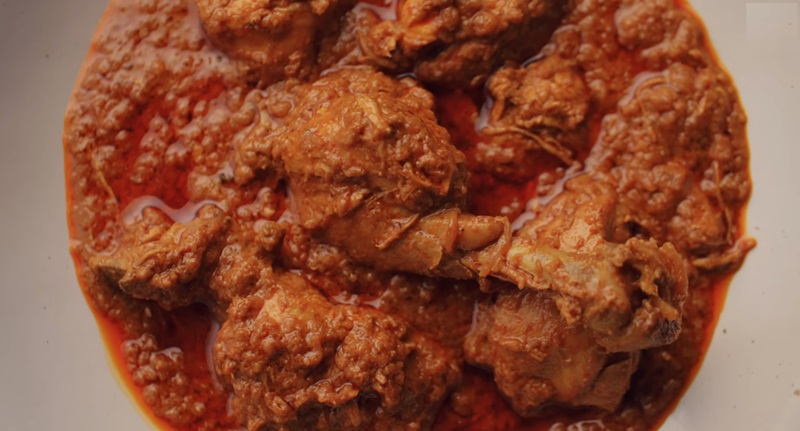
Korma is a popular dish in North Indian cuisine known for its rich, flavorful, and creamy gravy. It is a versatile dish that can be made with a variety of meats, such as chicken, lamb, or beef, or even with vegetables. The dish typically begins by marinating the meat or vegetables in a mixture of yogurt, spices, and sometimes nut pastes, like cashews or almonds. The marinated ingredients are then cooked slowly in a thick, aromatic gravy made with a blend of spices such as cardamom, cinnamon, cloves, and bay leaves. The key to a good korma lies in the delicate balance of spices, which gives the dish its unique taste. The addition of cream or milk towards the end of cooking enhances the richness of the dish, giving it a luscious and velvety texture. Korma is often enjoyed with basmati rice or naan bread, and its flavors can vary from mild to spicy, depending on personal preference. It is a dish that showcases the art of slow cooking and the mastery of blending spices, making it a favorite among food enthusiasts.
Raita
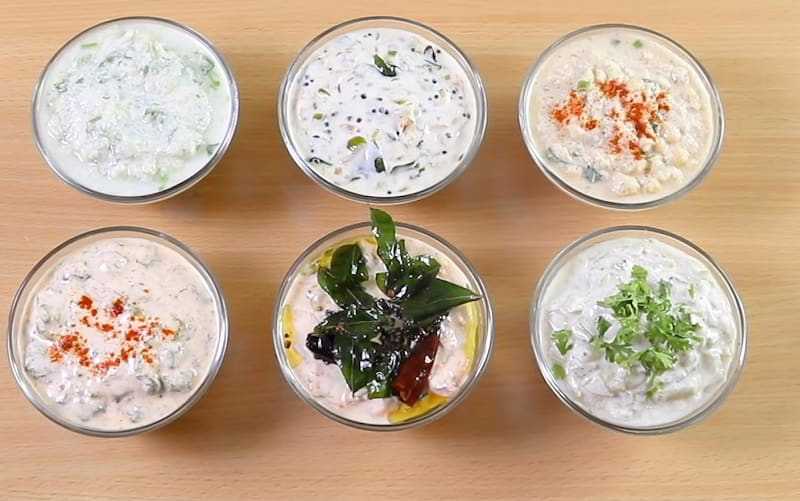
Raita is a traditional dish from the North Indian cuisine that is incredibly popular and well-loved. It is a yogurt-based side dish that is both refreshing and cooling, making it the perfect accompaniment to spicy and rich Indian dishes. Raita is made by whisking yogurt until it is smooth and then adding various ingredients such as chopped vegetables, herbs, and spices. One of the key ingredients in Raita is cucumber, which adds a crisp and refreshing element to the dish. Other common additions include tomatoes, onions, mint, coriander, and cumin. These ingredients not only enhance the flavor of the yogurt but also add a crunchy texture and vibrant colors to the dish. Raita is known for its versatility, as it can be customized according to personal preferences and the main dish it is being served with. It can be made with different variations, such as boondi raita (made with fried chickpea flour balls) or fruit raita (made with fresh fruits like pineapple or pomegranate). This delicious and healthy side dish not only complements the flavors of North Indian cuisine but also provides a soothing and cooling effect, making it a popular choice during the hot summer months. Raita is a must-try dish for anyone looking to explore the diverse and flavorful world of North Indian cuisine.
Ras Malai
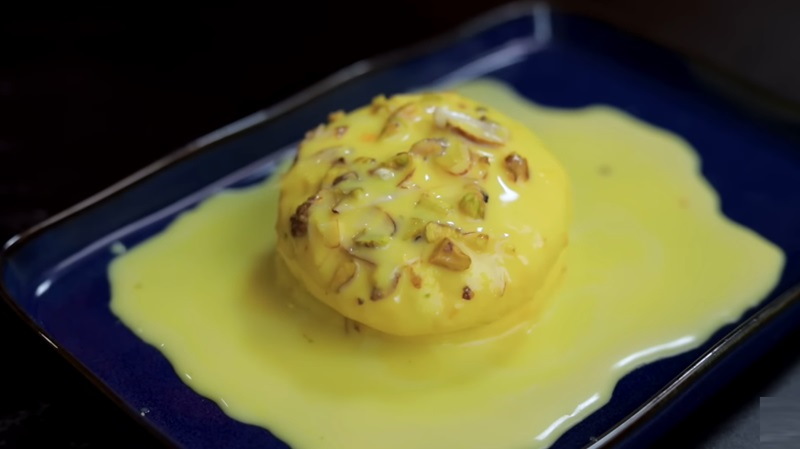
Ras Malai is a popular dessert in North Indian cuisine. It is a sweet, creamy, and indulgent dish that is loved by people of all ages. The name "Ras Malai" translates to "juicy cream" in Hindi, which perfectly describes the essence of this delightful dessert. The dish consists of soft and spongy cheese dumplings, known as "malai," that are soaked in a rich and sweetened milk syrup, flavored with cardamom and saffron. The dumplings are made by curdling milk and then kneading it into a dough-like consistency before shaping them into small balls. They are then cooked in a fragrant milk syrup until they become tender and velvety. The final result is a luscious and melt-in-your-mouth dessert that is typically garnished with chopped nuts, such as almonds and pistachios. The delicate flavors of cardamom and saffron infuse the dish, creating a heavenly aroma and taste. Ras Malai is often served chilled, making it a perfect treat for hot summer days. Its creamy texture, combined with the sweetness of the syrup and the nutty crunch of the garnish, make it a truly decadent and satisfying dessert. Whether enjoyed at a special occasion or as a sweet ending to a meal, Ras Malai is sure to leave a lasting impression on anyone who tries it.
Saag
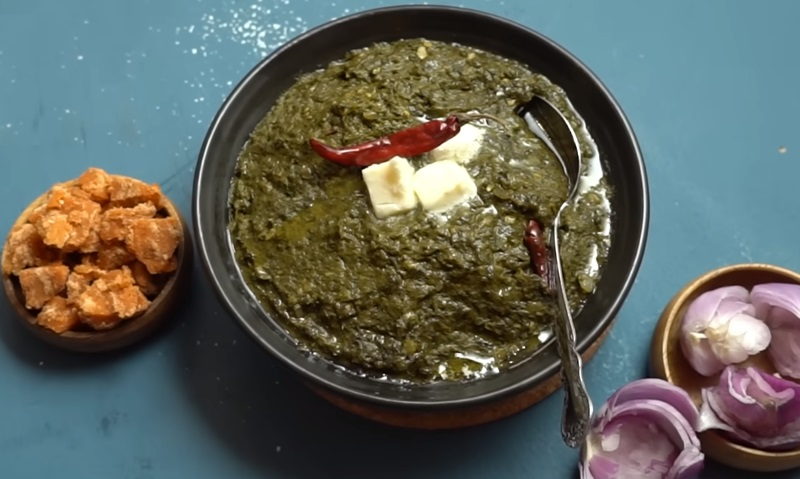
Saag is a popular dish in North Indian cuisine that is loved for its rich flavors and health benefits. It is a traditional preparation made with leafy greens such as spinach, mustard greens, or fenugreek leaves, which are cooked along with spices and aromatic ingredients. The process of making saag involves blanching the greens, followed by pureeing or chopping them finely. In a separate pan, a tempering of onions, garlic, ginger, and spices like cumin, coriander, and turmeric is prepared. The pureed greens are then added to this tempering, along with some water or stock, and simmered until the flavors meld together. Saag can be enjoyed as a vegetarian dish or can be enhanced with the addition of meat, such as chicken, lamb, or paneer. It is often served with hot rotis or naans, and can also be accompanied by rice or pulao. This dish is not only delicious but also packed with nutrients, as the leafy greens used in saag are high in vitamins, minerals, and antioxidants. The combination of spices used in the dish gives it a distinctive and aromatic flavor that is truly satisfying.
Thali
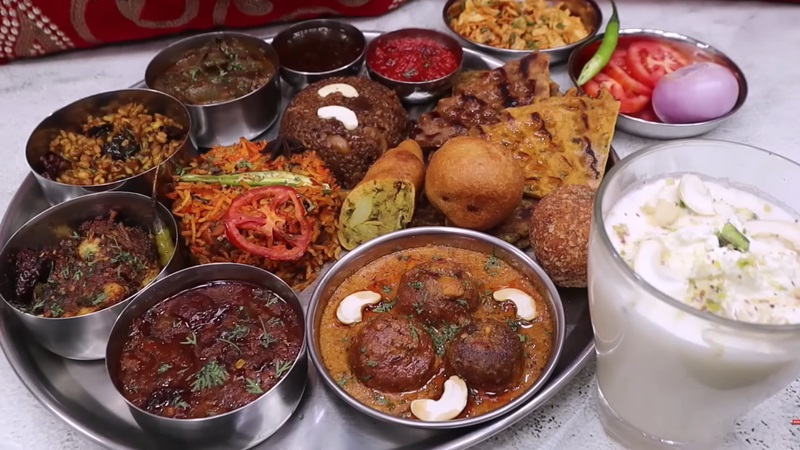
North Indian cuisine is renowned for its rich and diverse flavors, and one of the most popular and traditional ways to experience this culinary delight is through a Thali. A Thali is a traditional Indian meal that consists of a variety of dishes served on a large platter. In a North Indian Thali, you can expect to find a delectable assortment of vegetarian and non-vegetarian dishes that showcase the region's culinary heritage. The star of the Thali is often a fragrant and flavorful curry, such as butter chicken or paneer tikka masala. Accompanying the curry are a range of side dishes, such as daal (lentil curry), mixed vegetable curry, raita (yogurt-based side dish), and a variety of chutneys and pickles. The Thali also includes a selection of bread, such as naan or roti, which are perfect for mopping up the delicious gravies. Rice is another staple component of the Thali, usually served with aromatic biryani or pulao. To complete the Thali experience, a sweet dish like gulab jamun or kheer is served as a dessert. A North Indian Thali is not just a meal but a culinary journey that allows you to savor the diverse flavors and textures of this vibrant cuisine. It is a feast for the senses and a perfect representation of the richness and complexity of North Indian food culture.
Kheer
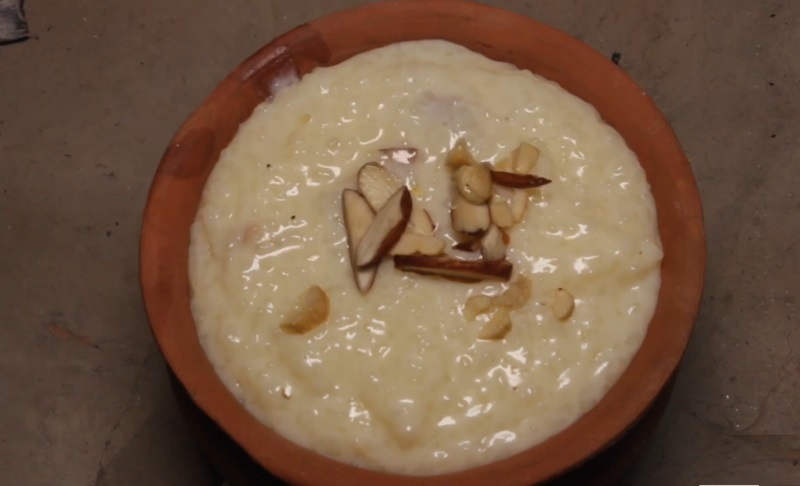
Kheer is a popular and traditional North Indian dessert that is loved by people of all ages. It is a creamy and sweet rice pudding that is made with basic ingredients like rice, milk, sugar, and flavored with cardamom, saffron, and dry fruits. The dish has a rich and thick consistency, making it a perfect comfort food. To prepare Kheer, rice is first cooked in milk until it becomes soft and tender. Then, sugar is added to sweeten it further, and cardamom powder and saffron strands are added for a delightful aroma and flavor. The dish is garnished with a generous amount of dry fruits like almonds, cashews, and raisins, which add a crunchy texture and enhance the taste. Kheer is often served warm or chilled, depending on personal preferences. It is commonly made during festivals and special occasions like weddings and religious ceremonies. The dish is not only enjoyed as a dessert but also considered auspicious and offered to deities during prayers and rituals. Overall, Kheer is a delectable and indulgent dessert that showcases the richness and sweetness of North Indian cuisine. Its creamy texture, fragrant aroma, and delightful flavors make it a favorite among many.
Falooda
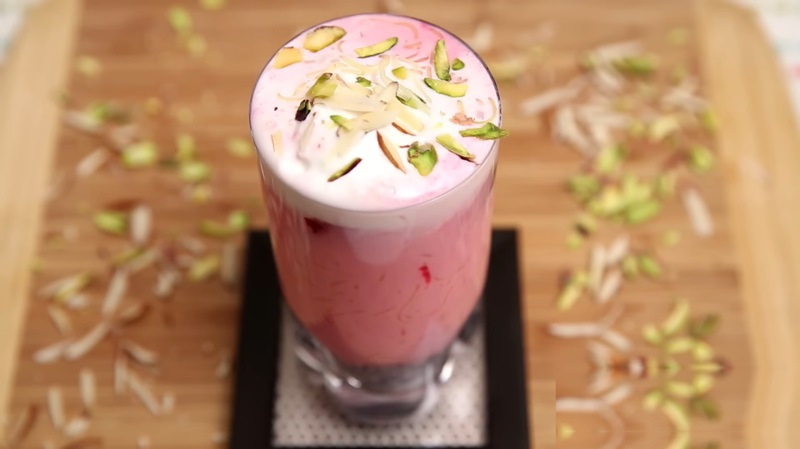
Falooda is a delightful and refreshing dessert dish that originates from the North Indian region. It is a perfect blend of sweet and creamy flavors, making it a popular choice during hot summer days. The dish consists of several layers of delicious ingredients that come together to create a harmonious taste experience. The base of the Falooda is made with vermicelli noodles, which are cooked until soft and then chilled. This is then topped with a generous serving of sweetened milk, infused with flavors like rose, saffron, or cardamom. The milk is often thickened with ingredients like condensed milk or ice cream, adding a luscious and creamy texture. To enhance the taste and texture further, Falooda is garnished with a variety of toppings. These can include colorful and chewy basil seeds, chopped nuts like almonds and pistachios, sweetened jelly cubes, and fresh fruits like mango or strawberry. The final touch is a drizzle of rose syrup, giving it a fragrant and floral aroma. Falooda is not just a treat for the taste buds, but also a feast for the eyes. Its vibrant colors and beautiful presentation make it an irresistible dessert option. Served chilled in tall glasses, it is a perfect indulgence to beat the heat and satisfy any sweet cravings.
Dal Makhani
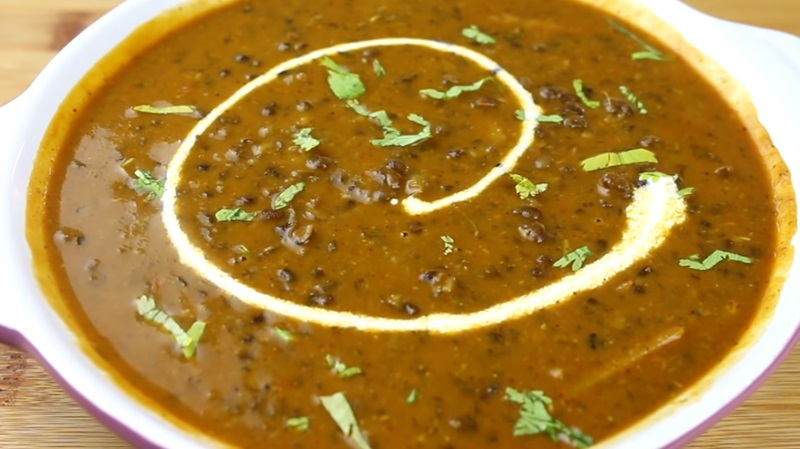
Dal makhani is a popular North Indian dish that is loved for its rich and creamy texture. It is made by slow-cooking black lentils (urad dal) and kidney beans (rajma) together with aromatic spices and a generous amount of butter and cream. The lentils and beans are first soaked overnight and then cooked until they are soft and tender. The key to a delicious dal makhani lies in the slow cooking process, which allows the flavors to develop and blend together perfectly. The dish is typically simmered for several hours on a low flame, allowing all the spices and ingredients to infuse into the lentils and beans. The resulting dal makhani has a velvety smooth texture and a rich, smoky flavor. It is often garnished with fresh cream and served with naan bread or steamed rice. The dish is a perfect combination of comfort and indulgence, making it a popular choice for special occasions and celebrations. Dal makhani is not only a treat for the taste buds but also a nutritious dish. The lentils and beans provide a good source of protein and fiber, making it a wholesome meal option. Whether enjoyed at a restaurant or homemade, dal makhani is a beloved North Indian dish that continues to win hearts with its creamy goodness.
Paya
-1708914907.jpg)
Paya is a traditional North Indian dish that is known for its rich and flavorful taste. It is a popular delicacy that is often enjoyed during special occasions and festivals. The dish consists of tender lamb or goat trotters that are slow-cooked with a medley of aromatic spices and herbs. To prepare Paya, the trotters are thoroughly cleaned and then simmered for hours in a thick and luscious gravy. The slow cooking process allows the flavors to meld together, resulting in a dish that is incredibly tender and bursting with taste. The spices used in Paya vary from region to region, but commonly include cinnamon, cardamom, cloves, ginger, garlic, and bay leaves. These spices infuse the dish with a warm and aromatic flavor profile, complemented by the richness of the meat. Paya is often served with naan or rice, allowing diners to soak up the flavorful gravy. The dish is known for its indulgent and comforting nature, making it a favorite among meat lovers. Whether enjoyed as a main course or as a hearty soup, Paya is a staple of North Indian cuisine that is sure to satisfy any palate.
Palak Paneer
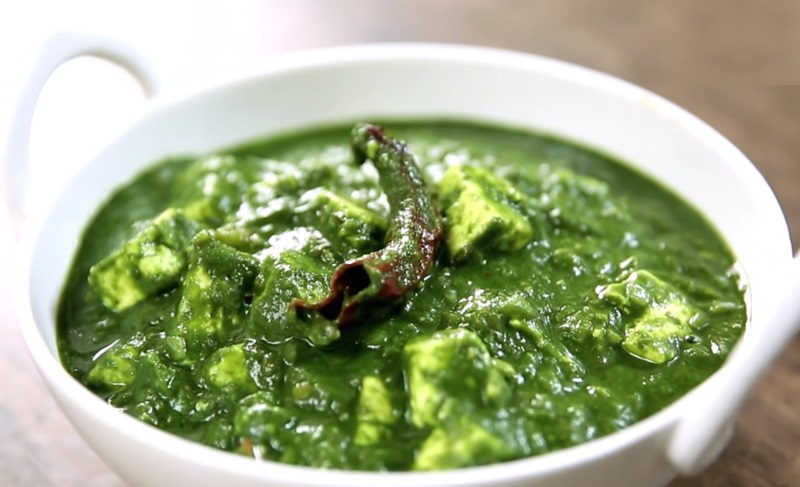
Palak paneer is a popular dish in North Indian cuisine that combines the goodness of spinach (palak) with cubes of soft paneer (Indian cottage cheese). This vegetarian delight is a perfect example of a healthy and flavorful meal. The dish starts by blanching fresh spinach leaves and then pureeing them into a smooth paste. In a pan, a mixture of onions, garlic, and ginger is sautéed until golden brown. The spinach paste is then added along with a blend of aromatic spices such as cumin, garam masala, and turmeric. This creates a rich, green gravy that forms the base of the dish. Cubes of paneer are lightly fried until golden and then added to the spinach gravy. The paneer absorbs the flavors of the spices and complements the mild bitterness of the spinach. The dish is finished off with a touch of cream or yogurt, which adds a creamy texture and balances the flavors. Served hot with naan (Indian bread) or rice, palak paneer is a nutritious and comforting dish that provides a burst of flavors. Its vibrant green color and velvety texture make it an attractive addition to any dining table.
Kachori
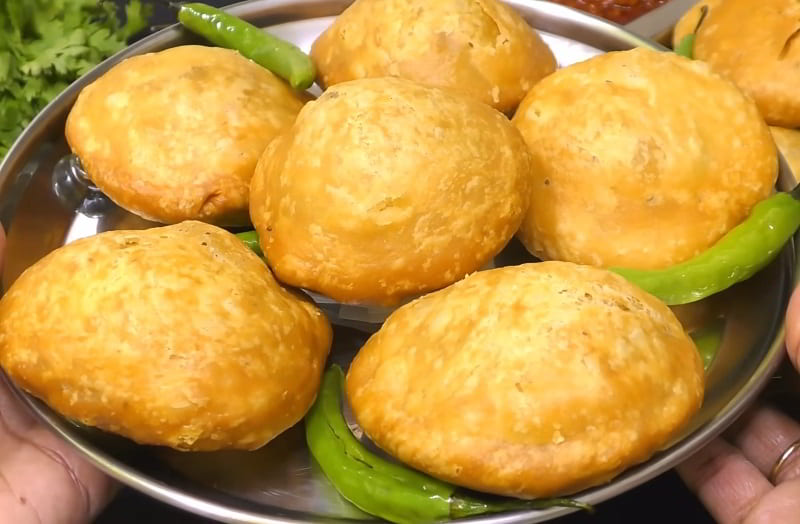
Kachori is a popular Indian snack hailing from North India and is a beloved street food. It is a deep-fried pastry filled with a flavorful stuffing. The outer crust of the kachori is crispy and flaky, while the filling is usually spicy and tangy. The traditional North Indian kachori is made from a dough of all-purpose flour, which is kneaded with ghee or oil and then shaped into small rounds. The rounds are then filled with a mixture of lentils, spices, and herbs. The filling can vary from region to region, but commonly includes ingredients like yellow moong dal, urad dal, spices like cumin, coriander, and chili powder, and fresh herbs like coriander leaves. Once the kachoris are prepared, they are deep-fried until golden brown and served hot. Kachoris are often enjoyed with a side of tangy tamarind chutney or spicy green chutney. They are a popular breakfast or tea-time snack and are also often served during festivals and special occasions. The combination of the crispy outer crust and the flavorful filling makes kachori a delicious and satisfying dish that is loved by people of all ages.
Kulcha
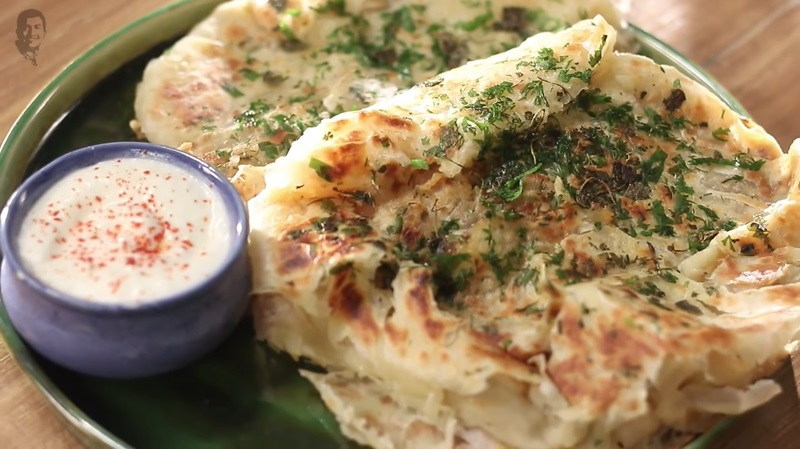
Kulcha is a popular North Indian dish that originated in Punjab. It is a type of leavened bread that is typically enjoyed with chole (spiced chickpea curry) or as an accompaniment to various other dishes. The dough for kulcha is made using all-purpose flour, yogurt, baking powder, and a pinch of salt. After the dough is kneaded and allowed to rest, it is rolled out into flat, oval-shaped breads. These breads are then baked in a tandoor (clay oven) or on a griddle until they puff up and develop a golden-brown crust. What sets kulcha apart from other breads is the addition of various toppings and fillings. Popular variations include plain kulcha, stuffed kulcha, and kulcha with onion seeds or sesame seeds sprinkled on top. Stuffed kulchas are filled with a variety of ingredients like paneer (Indian cottage cheese), potato, or mixed vegetables. Kulcha is known for its soft and fluffy texture, which complements the spiciness of the curries it is often paired with. It is a versatile dish that can be enjoyed as a breakfast item, a snack, or as part of a main course. Its delicious taste and hearty nature make it a favorite street food across North India.
Chana Masala
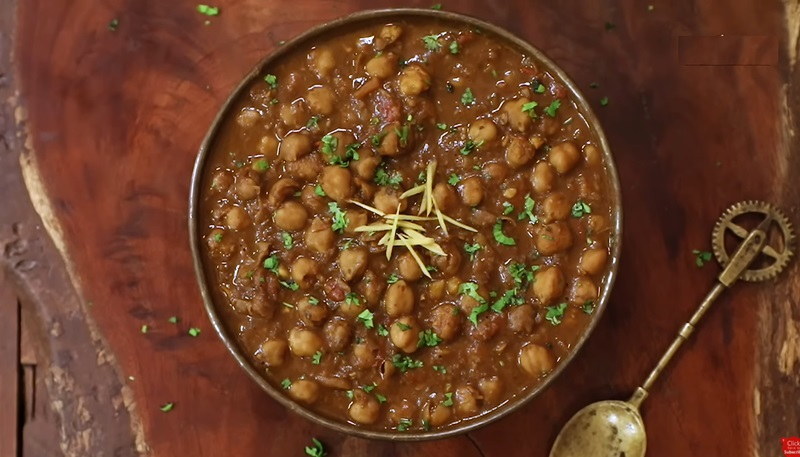
Chana masala is a popular dish in North Indian cuisine that is loved for its rich flavors and aromatic spices. This delectable dish is made with chickpeas, also known as chana, that are cooked in a flavorful tomato-based gravy. The preparation of chana masala involves cooking the chickpeas until they are tender and then sautéing them with a blend of spices such as cumin, coriander, turmeric, and garam masala. This combination of spices gives the dish its distinctive taste and aroma. To further enhance the flavors, the dish is typically cooked with onions, garlic, ginger, and tomatoes, which add a tangy and slightly sweet element to the gravy. Some variations of chana masala also include the addition of dried fenugreek leaves, which impart a unique and earthy flavor. Chana masala can be enjoyed with various Indian breads like naan or roti, or with steamed rice. It is a hearty and satisfying dish that is not only delicious but also packed with protein and fiber, making it a healthy and nutritious choice. Whether enjoyed as a main course or a side dish, chana masala is a true delight for the taste buds.
Petha
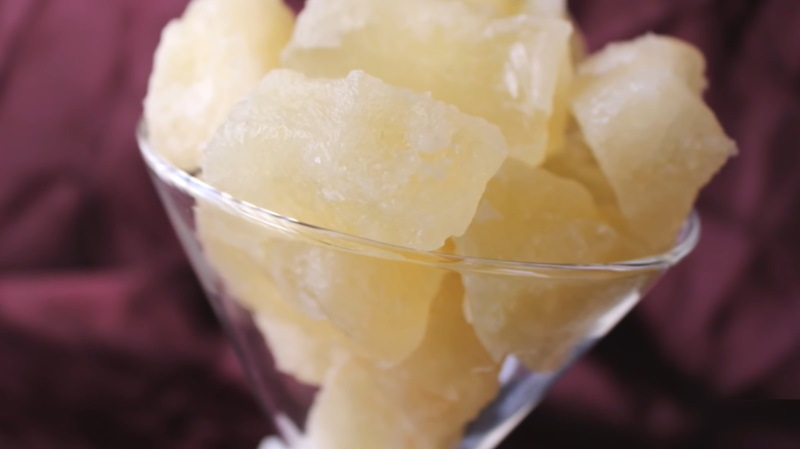
Petha is a popular North Indian sweet dish that originates from the city of Agra in Uttar Pradesh. It is made from ash gourd, also known as winter melon or white pumpkin, which is peeled, deseeded, and cut into desired shapes. The pieces are then boiled in sugar syrup until they become translucent and take on a soft texture. Petha comes in various flavors and varieties, including plain, kesar (saffron-infused), angoori (small, round pieces), and dry petha. The plain petha has a mild, sweet taste and a soft, chewy texture, while the kesar petha has a vibrant orange color and a rich saffron flavor. Angoori petha resembles small grapes and is loved for its unique presentation. Petha is not only a delicious dessert but also has various health benefits. It is low in calories and fat, making it a guilt-free indulgence. It is also rich in vitamins, minerals, and fiber, which aids digestion and promotes overall well-being. Petha is often enjoyed as a standalone sweet treat or used in various Indian desserts like halwa or rabri. It is also a popular choice for gifting during festivals and special occasions. Overall, Petha is a delightful North Indian delicacy that offers a unique combination of flavors and textures, making it a must-try for anyone with a sweet tooth.
Aloo Gobi
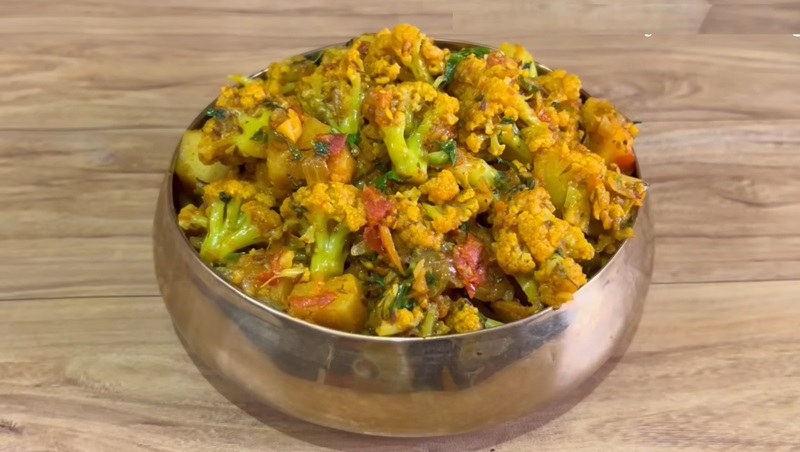
Aloo gobi is a popular dish in North Indian cuisine that combines the delicate flavors of potatoes (aloo) and cauliflower (gobi). This vegetarian dish is commonly prepared in households and enjoyed in restaurants across the region. To make aloo gobi, diced potatoes and cauliflower florets are sautéed in a blend of aromatic spices such as cumin, turmeric, coriander, and garam masala. This combination creates a rich and flavorful base for the dish. Other ingredients like onions, garlic, ginger, and tomatoes are added to enhance the taste. The dish is typically cooked until the vegetables become tender and infused with the spices. It is often garnished with fresh coriander leaves and served with warm roti or rice. Aloo gobi's soft and mildly spiced texture makes it a comforting and satisfying meal for vegetarians and non-vegetarians alike. With its vibrant colors and delightful aroma, aloo gobi showcases the essence of North Indian cuisine. Its simplicity and versatility have made it a favorite among food enthusiasts around the world.
Rajma
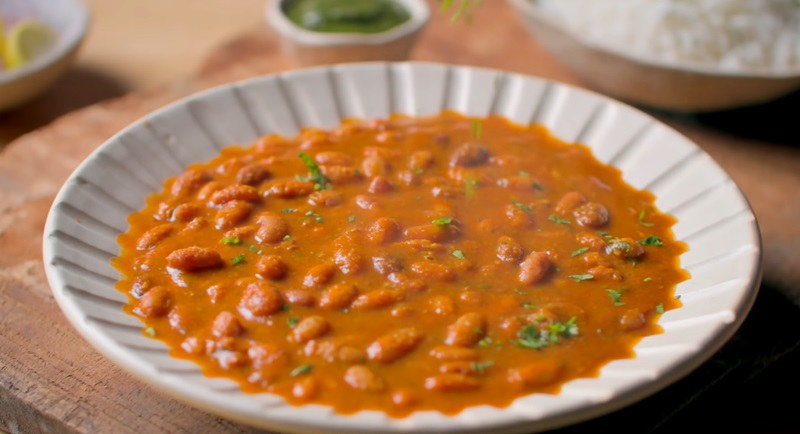
Rajma, a popular dish from North India, is a delicious and nutritious meal made with red kidney beans cooked in a thick and flavorful gravy. This vegetarian dish is a staple in many households and is often served with steamed rice or Indian breads like roti or naan. To prepare Rajma, the red kidney beans are soaked overnight and then pressure cooked until they are soft and tender. In a separate pan, a mixture of onions, tomatoes, ginger, garlic, and a blend of aromatic spices like cumin, coriander, turmeric, and garam masala is cooked until it forms a thick gravy. The cooked beans are then added to the gravy and simmered together, allowing the flavors to meld. The resulting Rajma dish is hearty and rich, with a creamy texture and a slightly tangy taste. It is often garnished with fresh coriander leaves and served hot, making it a comforting and satisfying meal. Rajma not only satisfies the taste buds but also provides a good source of protein and fiber, making it a healthy choice for vegetarians and meat-eaters alike.
Chole Bhature
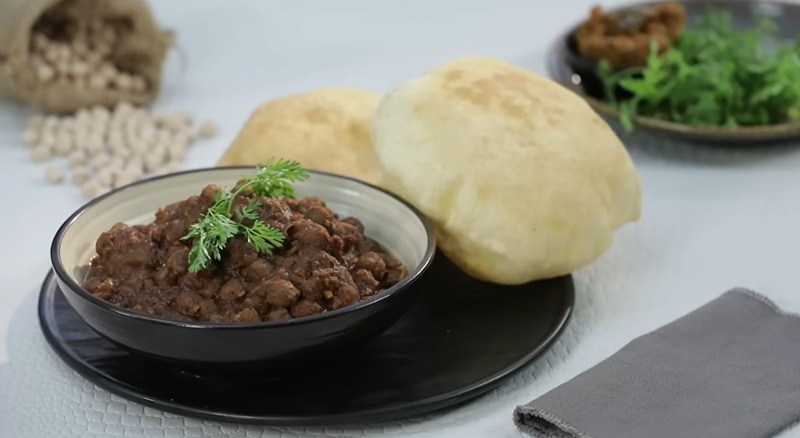
Chole bhature is a popular North Indian dish that consists of spicy chickpea curry (chole) served with deep-fried bread (bhature). It is a quintessential part of the Punjabi cuisine and is loved by people all over India. The chole, or chickpea curry, is made by cooking chickpeas with a blend of aromatic spices such as cumin, coriander, ginger, garlic, and garam masala. The curry is rich, flavorful, and has a slightly tangy taste due to the addition of amchur (dried mango powder) or tamarind pulp. It is usually garnished with fresh coriander leaves and served with a squeeze of lemon juice. The bhature, on the other hand, is a fluffy and deep-fried bread made from all-purpose flour and yogurt. It is soft and has a slightly crispy exterior. The dough is usually leavened with baking powder or yeast to give it a light and airy texture. Chole bhature is often enjoyed as a hearty breakfast or lunch. It is commonly served with pickles, sliced onions, and a side of yogurt or raita. The combination of the spicy and tangy chickpea curry with the fluffy and crispy bhature makes for a delightful and satisfying meal that is loved by people of all ages.
Ghevar
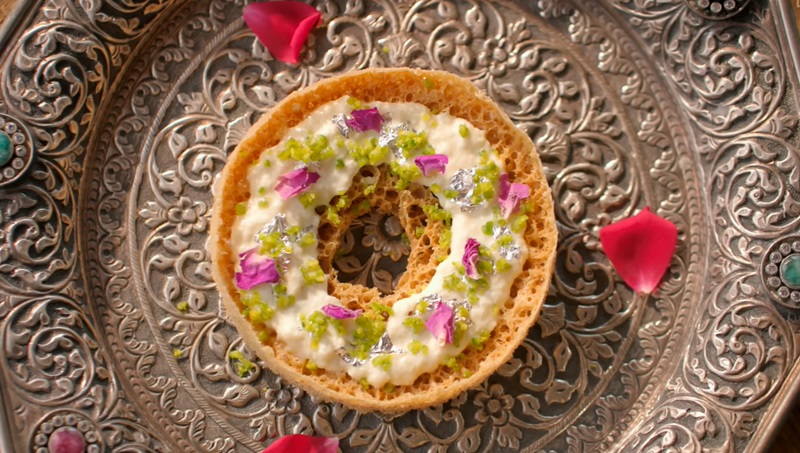
Ghevar is a popular sweet dish originating from the North Indian state of Rajasthan. It is a traditional Rajasthani dessert that is commonly prepared during festive occasions, particularly during the Teej festival. Ghevar is a disc-shaped sweet made from a batter consisting of all-purpose flour, ghee (clarified butter), and water. The batter is deep-fried in ghee until it turns crispy and golden brown. The unique aspect of Ghevar lies in its porous and honeycomb-like texture, which is achieved by pouring the batter through a perforated plate with concentric rings into hot ghee. Once fried, the Ghevar is soaked in a sugar syrup flavored with cardamom and saffron, giving it a delightful sweetness and aroma. Ghevar is often garnished with a variety of toppings, such as slivered almonds, pistachios, and edible silver foil, adding a touch of elegance to its presentation. It is served cold and can be enjoyed on its own or paired with a scoop of ice cream or rabri (a thickened milk-based dessert). The rich and decadent flavors of Ghevar make it a much-loved delicacy in North India, and it is a must-try for anyone looking to explore the diverse and vibrant cuisine of the region.
Gajar Ka Halwa
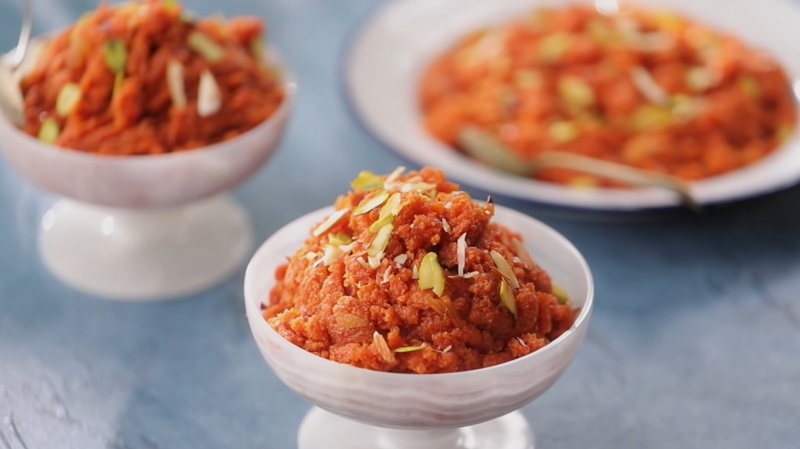
Gajar ka halwa, also known as carrot halwa, is a traditional and popular dessert hailing from the North Indian cuisine. It is a rich and indulgent sweet dish made with grated carrots, milk, sugar, ghee (clarified butter), and a generous amount of aromatic spices. Prepared by slowly cooking grated carrots in milk, the dish is infused with the natural sweetness and vibrant color of the carrots. The milk is reduced to a thick consistency, resulting in a creamy and luscious texture. The addition of ghee adds a rich and buttery flavor, enhancing the overall taste of the dish. To further enhance the flavors, cardamom powder, crushed nuts like almonds and pistachios, and sometimes raisins are added. The spices add a delightful aroma, while the nuts provide a delightful crunch to the dish. Gajar ka halwa is typically enjoyed warm, making it a perfect dessert for winters. It is often served on special occasions, festivals, or as a sweet treat after a hearty meal. The combination of the sweet and nutty flavors makes it a beloved and irresistible delicacy in North Indian cuisine.
Peda
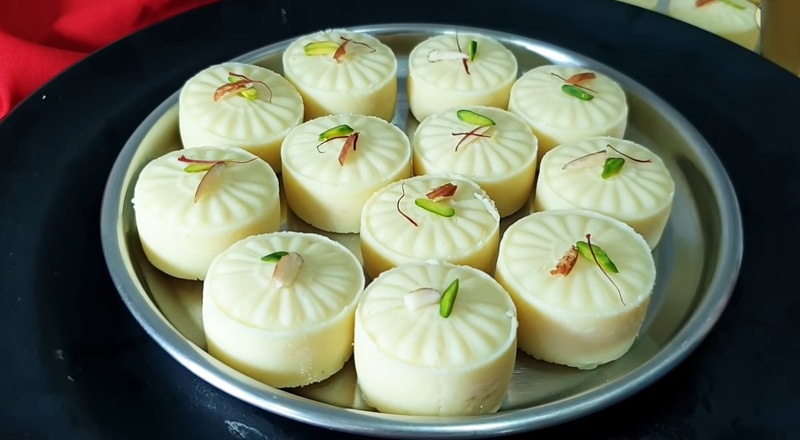
Peda is a traditional sweet dish hailing from North India, particularly popular in the states of Uttar Pradesh and Rajasthan. This delectable dessert is made by simmering milk and reducing it to a thick consistency, with the addition of sugar and aromatic spices. The mixture is then shaped into small, bite-sized rounds and garnished with various toppings. Peda comes in a variety of flavors, with the most common being plain, saffron, and cardamom. The plain peda has a creamy and rich taste, while the saffron peda has a vibrant yellow color and a hint of floral sweetness. The cardamom peda is fragrant and has a slightly spicy note. Peda is often enjoyed during festive occasions like Diwali and weddings, and it is also offered as prasad (religious offering) in temples. It is loved for its melt-in-your-mouth texture and indulgent flavor. The richness of the milk, combined with the sweetness of sugar and the pleasant aroma of spices, makes peda a delightful treat for anyone with a sweet tooth. Whether enjoyed on its own or paired with a cup of hot tea, peda remains a beloved sweet dish that showcases the authentic flavors of North Indian cuisine.
Sharbat
-1709097372.jpg)
Sharbat is a popular beverage in North Indian cuisine that is known for its refreshing and cooling properties. Derived from the Persian word "sharbat," which means sweet drink, it is a traditional summer drink that is perfect for quenching one's thirst. The preparation of Sharbat involves combining various ingredients such as fruits, flowers, herbs, and spices with water and sugar to create a flavorful and aromatic syrup. Some common flavors include rose, khus (vetiver), sandalwood, and mint, among others. The syrup is then diluted with water and served over ice, making it an ideal drink for hot summer days. Sharbat is not only delicious but also offers several health benefits. It helps in hydrating the body, aids digestion, and provides relief from heat-related ailments. Additionally, the use of natural ingredients like rose petals or mint leaves adds a burst of freshness and fragrance to the beverage. Sharbat is often enjoyed during festive occasions or as a welcome drink to guests. It is also a popular choice at street food stalls and restaurants throughout North India. Sipping on this delightful drink is a true delight for the taste buds and a quintessential part of North Indian cuisine.
Sheermal
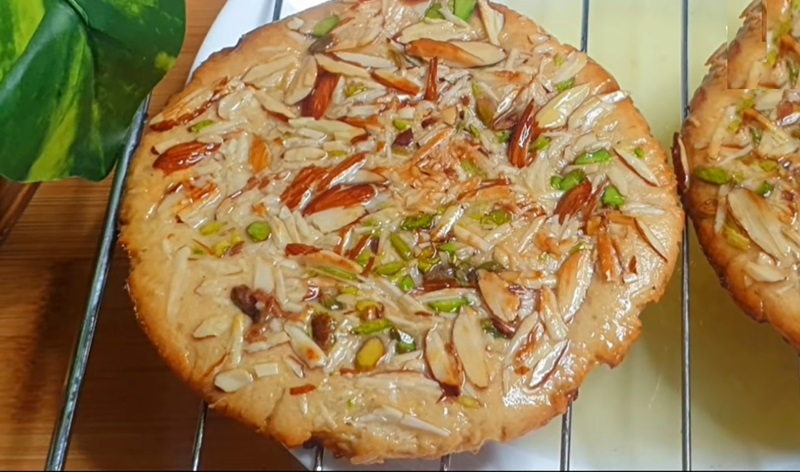
Sheermal is a delectable and aromatic bread that is a popular dish in North Indian cuisine. Originating from Awadhi cuisine, it is a sweet, saffron-infused flatbread that is often served as a dessert or accompaniment to rich and flavorful gravies. The preparation of Sheermal involves a unique technique that sets it apart from other breads. The dough is made using flour, milk, sugar, and ghee, which gives it a rich and soft texture. Saffron strands are soaked in milk and added to the dough, giving the bread a beautiful golden color and a distinct aroma. Once the dough is prepared, it is rolled out into round or oval shapes and baked in a tandoor or oven until it puffs up and turns slightly brown. The end result is a slightly sweet and buttery bread that is extremely soft and fluffy. Sheermal is often garnished with chopped nuts like pistachios or almonds, which add a delightful crunch and enhance its visual appeal. It is best enjoyed warm and can be served with a variety of dishes such as kebabs, curries, or enjoyed on its own as a sweet treat. Overall, Sheermal is a delightful bread that combines the richness of milk and ghee with the fragrance of saffron, making it a must-try dish in North Indian cuisine.
Gujia
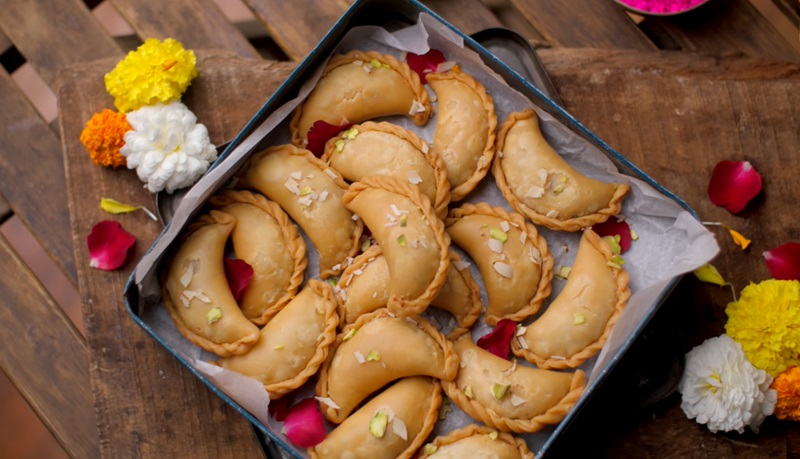
Gujia is a popular sweet dish that originated in North India, particularly in the states of Uttar Pradesh and Rajasthan. It is commonly made during festivals and special occasions, especially during the festival of Holi. Gujia is a sweet dumpling made with a flaky pastry shell that is filled with a mixture of khoya (milk solids), nuts, and dried fruits. The pastry shell is made by combining all-purpose flour, ghee (clarified butter), and water, which is then rolled out into small circles. The filling is made by cooking khoya with sugar, cardamom, nuts like almonds and pistachios, and dried fruits like raisins and coconut. This mixture is then spooned into the pastry shells and sealed by folding the edges and pinching them together. The filled gujias are then deep-fried until they turn golden brown and crispy. Once cooked, they are traditionally dipped in sugar syrup to add extra sweetness and flavor. Gujias can be enjoyed both warm and cold, and they have a rich and indulgent taste with a delightful combination of textures from the flaky pastry and the creamy filling. Gujia is not only a delicious treat but also holds cultural significance in North Indian cuisine. It is often shared with friends and family during festive celebrations, symbolizing joy and togetherness.
Imarti
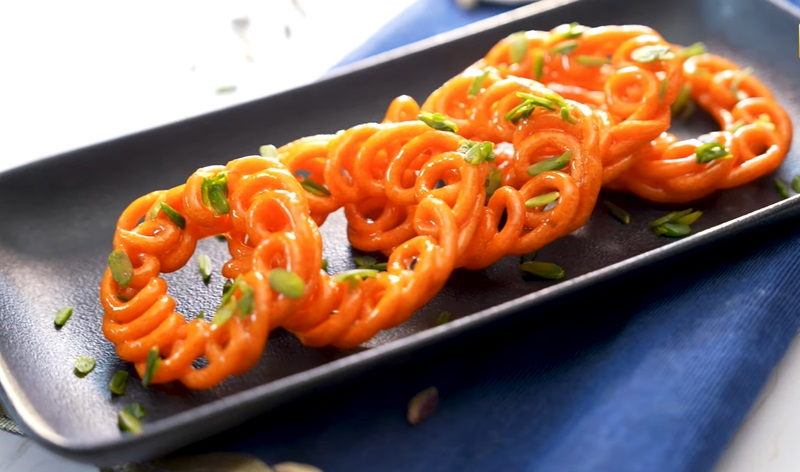
Imarti is a delectable, traditional sweet dish that hails from the northern region of India. It is a popular dessert that is often enjoyed during festivals and special occasions. Imarti is made using a batter of urad dal (split black gram) and rice flour, which is then deep-fried in ghee (clarified butter). The batter is carefully piped into a circular shape, resembling a flower, and fried until it turns golden brown and crispy. Once the imartis are cooked, they are soaked in a sugar syrup infused with cardamom and saffron, which adds a delightful aroma and flavor to the dish. Imarti has a distinct taste and texture. It is crispy on the outside and soft, spongy, and syrupy on the inside. The syrup imparts a sweet and aromatic flavor to the imarti, making it a delightful treat for those with a sweet tooth. Imarti is often garnished with chopped nuts, such as pistachios or almonds, to add a crunchy element. It is usually served warm or at room temperature and is enjoyed on its own or accompanied by rabri (sweet, condensed milk). This mouthwatering North Indian dessert is a perfect way to end a meal and is loved by people of all ages. Its unique shape, flavors, and textures make imarti a truly indulgent and memorable treat.
Sarson Ka Saag
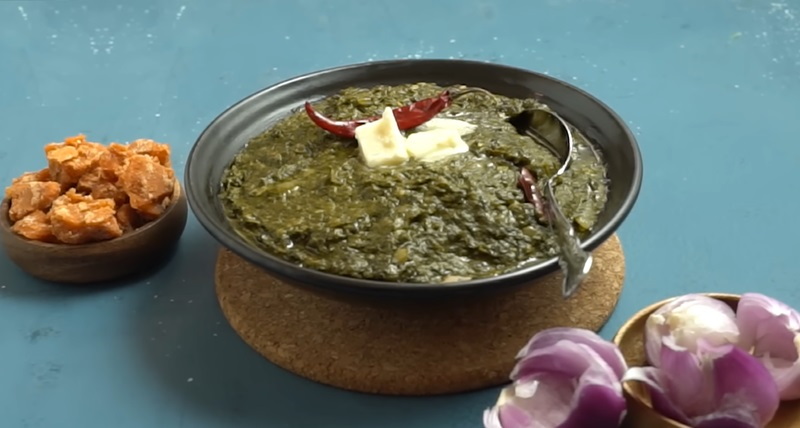
Sarson ka saag is a traditional dish from the North Indian state of Punjab. It is a rich and hearty dish made primarily with mustard greens (sarson) and other leafy greens like spinach (palak) and bathua. The greens are finely chopped and cooked with a medley of spices including ginger, garlic, green chilies, and garam masala. The dish is typically slow-cooked for hours on a low flame, allowing the flavors to develop and the greens to soften and meld together. The end result is a thick and luscious puree, often served with a dollop of butter or ghee on top. Sarson ka saag is usually enjoyed with makki di roti, a cornmeal flatbread, and a side of buttermilk or lassi. The combination of the earthy, slightly bitter greens with the comforting warmth of the spices creates a truly unique and delicious flavor profile. This dish is not only a staple in Punjabi cuisine but also a popular choice during the winter months when mustard greens are in season. It is a perfect example of North Indian cuisine's emphasis on bold flavors and hearty, nourishing dishes.
Mattar Paneer
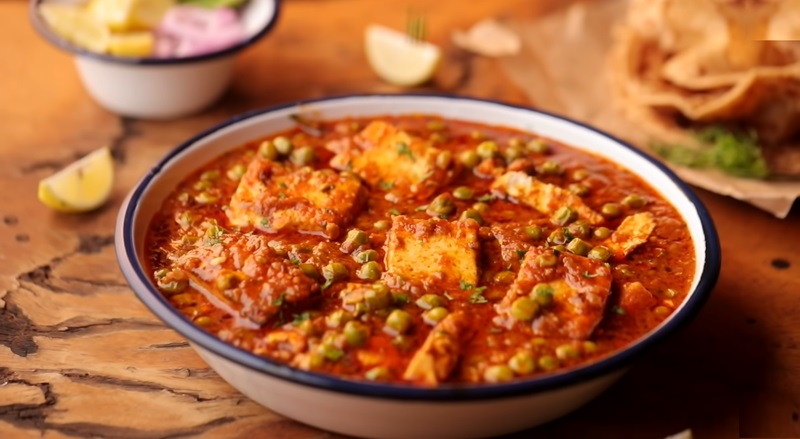
Mattar paneer is a popular North Indian dish that is loved for its rich flavors and comforting taste. This traditional vegetarian dish combines two main ingredients - peas (mattar) and paneer (Indian cottage cheese) - along with a variety of aromatic spices. To prepare this dish, paneer is first lightly fried until golden brown, giving it a slight crisp texture. The peas are then cooked until tender, creating a delightful contrast in texture. The two ingredients are then simmered together in a luscious tomato-based gravy, which is infused with a blend of spices such as cumin, coriander, turmeric, and garam masala. The result is a dish that boasts a perfect balance of flavors - the sweetness of the peas, the creaminess of the paneer, and the spiciness of the gravy. Mattar paneer is often enjoyed with hot rotis or naan bread, but it can also be served alongside steamed rice. With its vibrant colors and tantalizing aroma, mattar paneer is not only a delicious dish but also a celebration of the rich culinary heritage of North India. Whether enjoyed as a main course or a side dish, this classic dish is sure to leave a lasting impression on your taste buds.
Shahi Paneer
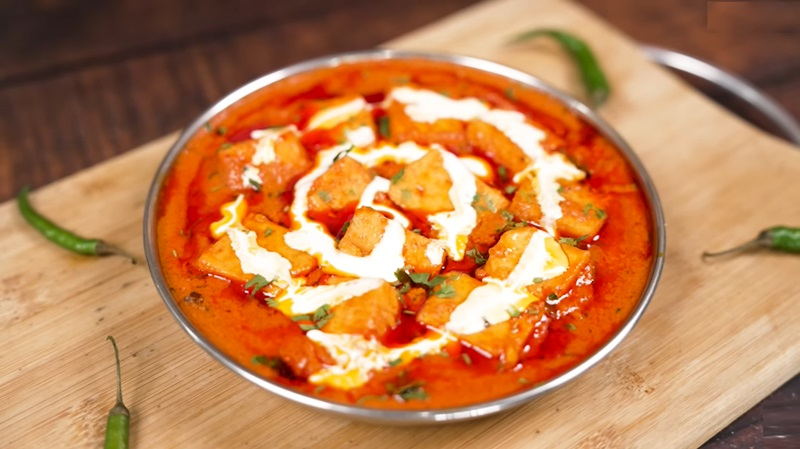
Shahi paneer is a classic dish from the North Indian cuisine that is known for its rich and creamy flavors. It is a vegetarian dish made with paneer (Indian cottage cheese) cooked in a luscious gravy made of onions, tomatoes, cashews, and a blend of aromatic spices. The dish gets its name from the word "Shahi," which means royal, and rightfully so, as it is considered a delicacy fit for kings and queens. The gravy is prepared by sautéing onions until golden brown and then blending them with tomatoes and cashews to create a smooth and silky texture. To enhance the flavors, a mix of spices like cardamom, cinnamon, cloves, and mace are added, along with ginger-garlic paste. Once the gravy is ready, cubes of paneer are added and simmered gently until they soak up the flavors and become tender. The final touch involves garnishing the dish with a sprinkle of dried fenugreek leaves and a drizzle of fresh cream, which adds a touch of richness and indulgence. Shahi paneer is often enjoyed with naan (Indian bread) or rice and is a popular choice in Indian restaurants and households alike. Its creamy, aromatic, and royal flavors make it a beloved dish that represents the essence of North Indian cuisine.
Aloo Paratha
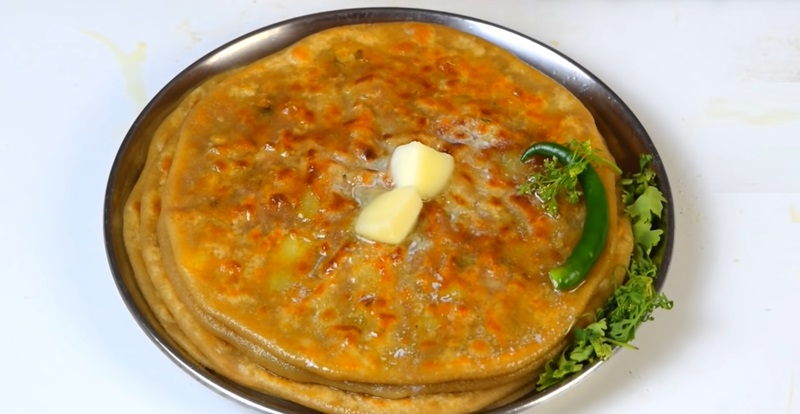
Aloo paratha is a popular and delicious North Indian dish that is loved by people of all ages. It is a type of stuffed bread made with whole wheat flour and stuffed with a flavorful mixture of mashed potatoes, onions, green chilies, and various spices. The dough is rolled out into a round shape, and the filling is placed in the center. The edges are then sealed and the paratha is cooked on a griddle with ghee or oil until it becomes golden brown and crispy. The combination of the soft and flaky paratha with the spicy and tangy potato mixture makes aloo paratha a delightful treat. It is often served with a dollop of butter, yogurt, or pickle, and can be enjoyed as a breakfast dish, a snack, or even as a main course. Aloo paratha is not only delicious but also quite filling, making it a popular choice among people who are looking for a hearty and satisfying meal. This flavorful dish is not only loved in North India but has gained popularity all over the country and even in various parts of the world. Its simple yet enticing flavors and the comforting feeling it provides make aloo paratha a staple in Indian cuisine.
Tunde Ke Kabab
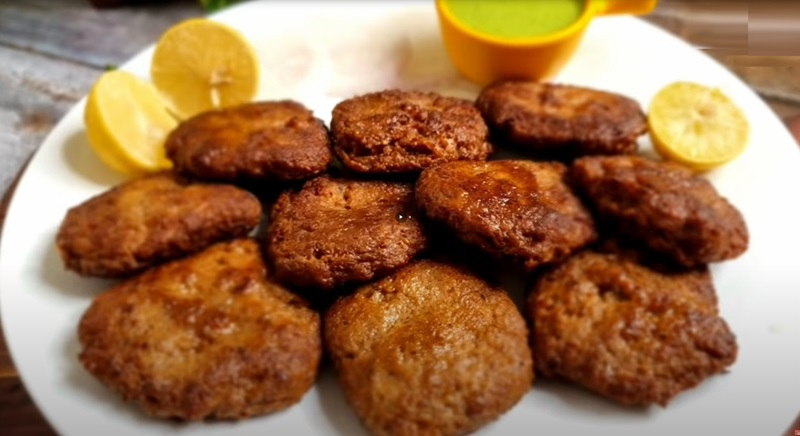
Tunde ke kabab is a popular dish from the North Indian cuisine, specifically associated with the city of Lucknow in Uttar Pradesh. It is a delectable kebab made from minced meat, usually lamb or beef, which is marinated with a blend of aromatic spices and then grilled to perfection. What sets Tunde ke kabab apart from other kababs is its unique preparation technique. The meat is finely minced to achieve a smooth and velvety texture, making it incredibly tender. The secret to its distinct flavor lies in the use of more than 160 spices, carefully blended together to create a rich and flavorful marinade. Traditionally, these kababs are cooked on a large skewer over a charcoal fire, allowing the smoky flavors to infuse into the meat. The end result is a juicy and succulent kabab with a melt-in-your-mouth texture. Tunde ke kabab is often served with mint chutney, sliced onions, and roomali roti (thin bread) or naan. It is a beloved dish among meat lovers and is considered a culinary gem of Lucknow. The combination of the tender meat, flavorful spices, and smoky aroma makes Tunde ke kabab an absolute delight for the taste buds. It is a must-try dish for anyone exploring the diverse and delectable North Indian cuisine.
Dal Baati
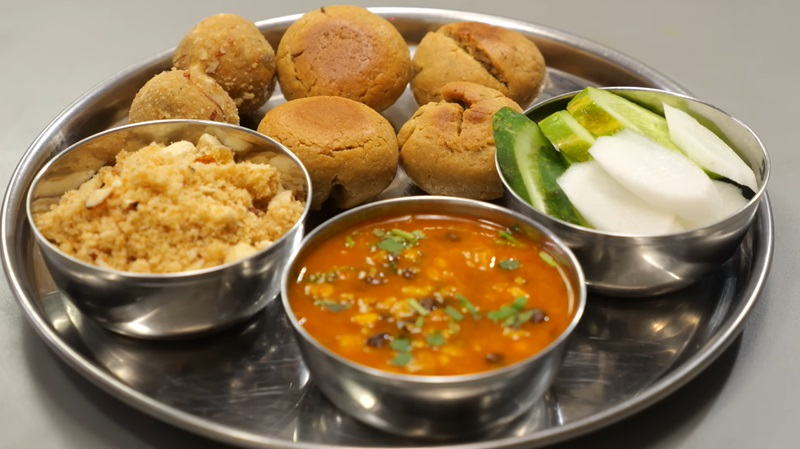
Dal Baati is a traditional and popular dish from the North Indian cuisine, particularly from the state of Rajasthan. This hearty and flavorful dish consists of two main components: dal (lentil soup) and baati (baked wheat balls). The dal is prepared by cooking a variety of lentils with aromatic spices like cumin, turmeric, and garam masala. It is slow-cooked to perfection, resulting in a thick and creamy consistency that is rich in flavor. Baati, on the other hand, is made by mixing wheat flour with ghee (clarified butter), yogurt, and a pinch of salt. The dough is then shaped into small balls and baked in a traditional clay oven called tandoor or in an electric oven until they turn golden brown and crispy. To enjoy this dish, the baatis are typically served with a generous helping of dal, along with some ghee and chutney. The baatis are broken into pieces and dunked into the dal, resulting in a delightful combination of textures and flavors. Dal Baati is not only a delicious dish but also a wholesome meal that provides a good balance of protein, carbohydrates, and essential nutrients. Its rustic and authentic flavors make it a favorite among people who appreciate the traditional cuisine of North India.
Aloo Tikki

Aloo tikki is a popular and flavorful dish that originates from North Indian cuisine. It is a delicious street food snack that is loved by people of all ages. Aloo tikki is made from mashed potatoes that are mixed with various spices and then shaped into round patties. These patties are then shallow fried until they turn golden brown and crispy. The dish is a perfect balance of flavors, with the earthy taste of potatoes combined with aromatic spices like cumin, coriander, and garam masala. It is often served with a tangy tamarind chutney or a spicy mint chutney, adding an extra dimension of taste to the dish. Aloo tikki can be enjoyed on its own as a snack, or it can be used as a filling in other dishes like burgers or chaat. It is commonly served with a variety of toppings, such as yogurt, chopped onions, and sev (crunchy fried noodles). The contrasting textures and flavors make it a delightful treat for the taste buds. Whether you have it as a street food snack or as a part of a meal, aloo tikki is sure to leave you craving for more. Its simplicity and delectable taste make it a popular choice among food lovers, both in India and around the world.
Malpua
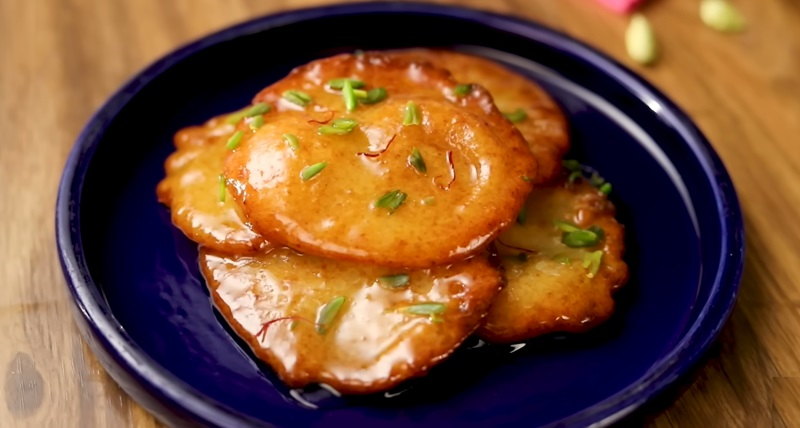
Malpua is a popular and indulgent dessert in North Indian cuisine. It is a sweet pancake-like dish that is enjoyed by people of all ages. Made from a batter of flour, milk, sugar, and cardamom, malpua is deep-fried until it turns golden brown and crispy on the outside, while remaining soft and fluffy on the inside. Traditionally, malpua is served hot and garnished with a generous drizzle of sugar syrup or jaggery syrup, which adds a delightful sweetness and sticky texture. It is often accompanied by a side of creamy, thickened milk known as rabri, which enhances the richness and flavor of the dish. Some variations of malpua also include the addition of chopped nuts, such as almonds or pistachios, to provide a crunchy texture. Malpua is commonly prepared during festive occasions like Holi and Diwali, but it is also relished as a delectable dessert throughout the year. Its irresistible taste and aroma make it a favorite among sweet lovers, and its preparation is considered an art form in itself. Whether enjoyed as a standalone treat or as a delightful end to a meal, malpua is sure to leave a lasting impression on anyone who indulges in it.
Shami Kebab
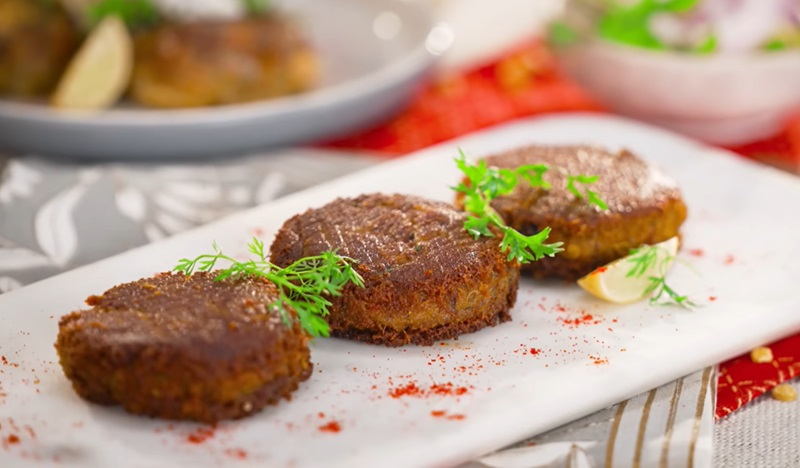
Shami kebab is a delectable dish that is an integral part of North Indian cuisine. Originating from the Awadhi region of India, this kebab is known for its rich flavors and tender texture. The name "shami" translates to "fragrant" in Urdu, which accurately describes the aromatic experience that this dish offers. The kebab is made with minced meat, traditionally lamb or mutton, which is combined with a mixture of lentils, spices, and herbs. The meat is cooked until it becomes extremely tender, resulting in a melt-in-your-mouth experience. The lentils not only add a unique taste but also enhance the kebab's texture. The ingredients are ground together to form a smooth dough-like mixture, which is then shaped into small patties. These patties are typically shallow-fried in ghee or oil until they develop a golden-brown crust. The frying process gives the kebab its signature crispy exterior, while the inside remains moist and flavorful. Shami kebabs are often enjoyed as an appetizer or as a side dish alongside various accompaniments such as mint chutney, tamarind chutney, or a yogurt-based dip. They can also be served as a filling in sandwiches or wraps. With its heavenly aroma, succulent taste, and a perfect balance of spices, the shami kebab is a must-try dish for anyone looking to explore the wonders of North Indian cuisine.
Makhan Malai
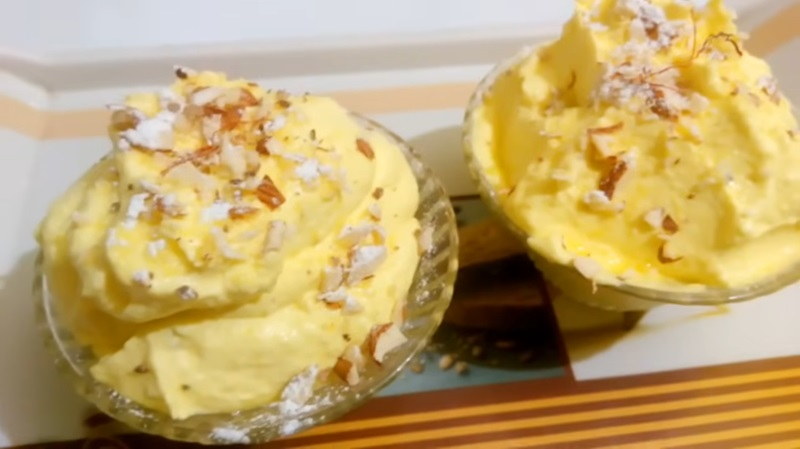
Makhan malai is a delightful North Indian sweet dish that is often enjoyed during the winter season. This heavenly dessert is made with a combination of cream, khoya (milk solids), sugar, saffron, and a variety of nuts. The name "Makhan malai" translates to "butter cream" in English, and it truly lives up to its name. To prepare this delectable dish, the cream is collected from the milk and then whipped until it becomes light and fluffy. It is then mixed with khoya, sugar, saffron, and a generous amount of nuts such as almonds, pistachios, and cashews. The mixture is chilled and served in small earthen pots, giving it an authentic and rustic touch. The taste of Makhan malai is rich, creamy, and slightly sweet. The saffron adds a delicate flavor and the nuts provide a wonderful crunch. It is often enjoyed as a dessert after a hearty meal or during festive occasions. Makhan malai is a beloved dessert in North India, especially in cities like Lucknow and Kanpur. It is not only a treat for the taste buds but also a visual delight with its creamy texture and vibrant garnishing of nuts. This indulgent dish truly embodies the richness and opulence of North Indian cuisine.
Murgh Musallam
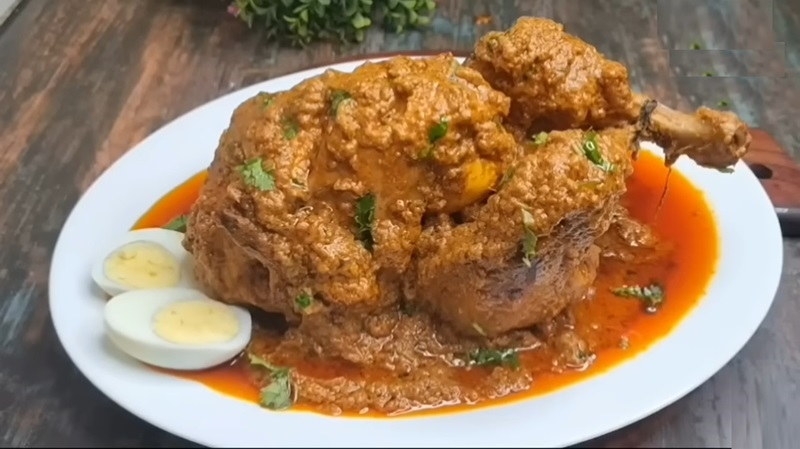
Murgh musallam is a delectable North Indian dish that is known for its rich flavors and aromatic spices. It is a classic Mughlai recipe that originated in the royal kitchens of the Mughal Empire. The dish features a whole chicken marinated in a blend of yogurt and a variety of spices, such as ginger, garlic, turmeric, and red chili powder. The marinated chicken is then slow-cooked in a thick gravy made from tomatoes, onions, and a blend of fragrant spices. The addition of saffron, cardamom, and cinnamon gives the dish a unique and exotic flavor. The gravy is simmered until it thickens and coats the chicken, resulting in a tender and flavorful meat. Murgh musallam is typically garnished with fried onions, coriander leaves, and a squeeze of fresh lemon juice, which adds a refreshing tanginess to the dish. It is often served with naan bread or steamed rice, making it a hearty and satisfying meal. This dish is a true representation of the rich culinary heritage of North India and is enjoyed by both locals and visitors alike. Its flavorful and aromatic profile makes it a standout dish in the North Indian cuisine.
Pinni
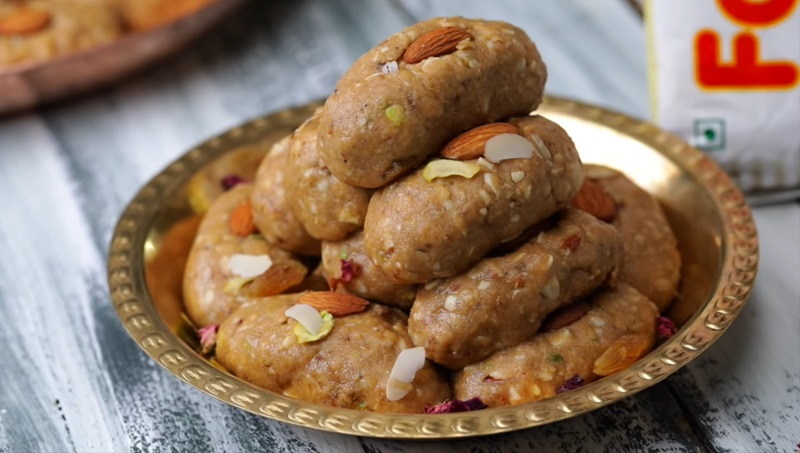
Pinni is a traditional North Indian sweet dish that is widely popular in the states of Punjab, Haryana, and Uttar Pradesh. It is a rich and indulgent dessert made from a combination of ghee (clarified butter), wheat flour, desi ghee, jaggery, and a variety of nuts and dry fruits. The process of making pinni involves roasting the wheat flour in ghee until it turns golden brown, giving it a distinct nutty flavor. Jaggery, which is a type of unrefined cane sugar, is then added to sweeten the dish. This gives pinni a unique caramel-like taste. The mixture is then shaped into small round balls and garnished with chopped nuts such as almonds, cashews, and pistachios. Pinni is often enjoyed during festivals and special occasions as a symbol of celebration and good fortune. It is also considered a nutritious treat as it provides energy and warmth during the cold winter months. Some variations of pinni may include ingredients like edible gum, coconut, and cardamom powder, adding different flavors and textures to the dish. Overall, pinni is a delightful and decadent North Indian dessert that showcases the rich culinary heritage of the region. Its sweet and nutty flavors, combined with the goodness of ghee and dry fruits, make it a favorite among both locals and visitors alike.
Panjiri
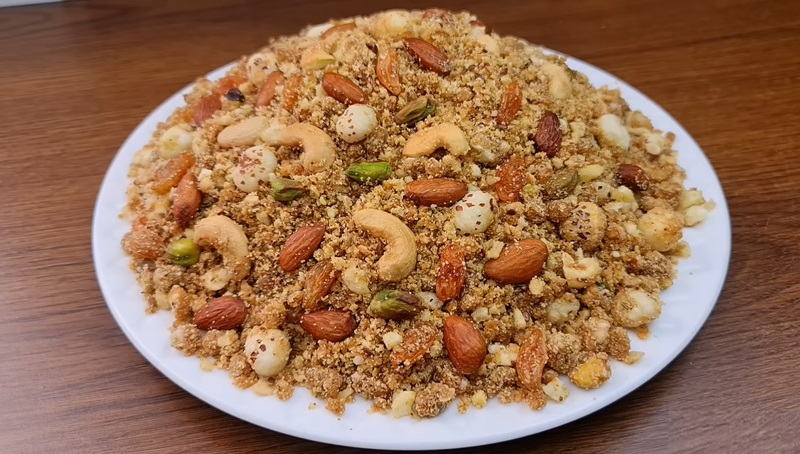
Panjiri is a traditional sweet dish from North India that is often prepared during special occasions and festivals. It is made using a combination of various ingredients that are known for their nutritional value and health benefits. The main ingredients used in making Panjiri include whole wheat flour, ghee (clarified butter), sugar or jaggery, dried fruits, and a variety of seeds such as flax seeds, melon seeds, and poppy seeds. These ingredients are roasted in ghee until they turn golden brown, giving the dish a rich and nutty flavor. Panjiri is known for its high energy content and is often consumed during winters or after childbirth to provide nourishment and strength. It is believed to have medicinal properties and is considered beneficial for digestion and overall well-being. The combination of dried fruits and seeds adds a crunchy texture to the dish, making it an enjoyable treat. Panjiri is typically served as a prasad (religious offering) in temples or distributed among friends and family during festivities. It is a delightful and nutritious dish that showcases the richness of North Indian cuisine.
Paneer Makhani

Paneer makhani is a delectable dish that originates from North Indian cuisine. It is a rich and creamy vegetarian dish that is loved by many. The star ingredient of this dish is paneer, which is a type of Indian cheese. The paneer is cooked in a smooth and velvety tomato-based gravy, which is flavored with a blend of aromatic spices such as garam masala, turmeric, and coriander powder. To prepare paneer makhani, the paneer is first marinated in a mixture of yogurt and spices, then lightly fried until golden brown. Meanwhile, a luscious gravy is made by blending together tomatoes, onions, ginger, and garlic. This gravy is then cooked with butter and cream to give it a rich and indulgent texture. The fried paneer is then added to the gravy, allowing it to soak up all the flavors. The result is a dish that is incredibly flavorful and satisfying. The creamy gravy complements the soft and succulent paneer perfectly, making paneer makhani a favorite among vegetarians and non-vegetarians alike. It is often served with naan or rice, making it a complete and hearty meal.
Baingan Bharta

Baingan bharta is a popular North Indian dish that is loved for its smoky and flavorful taste. Made from roasted eggplant, this vegetarian dish is a perfect blend of spicy and tangy flavors. The preparation of baingan bharta involves roasting the eggplant until the skin is charred and the flesh becomes soft. Once cooled, the skin is peeled off, and the pulp is mashed to a smooth consistency. In a pan, a mixture of onions, tomatoes, ginger, garlic, and spices such as turmeric, cumin, and red chili powder are sautéed until aromatic. The mashed eggplant is then added to the pan, along with a generous amount of ghee or oil, which enhances the richness of the dish. The mixture is cooked further, allowing the flavors to meld together. Finally, fresh coriander leaves are added for a burst of freshness. Baingan bharta is typically served with warm rotis or naan, and it can also be enjoyed with rice. This smoky and spicy dish is a delightful addition to any North Indian meal, and it is a favorite among vegetarians and eggplant enthusiasts alike.
Kadhi
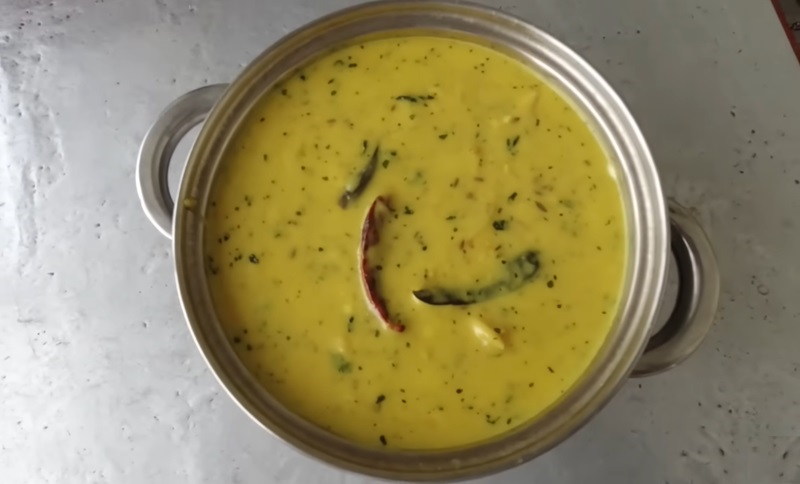
Kadhi is a popular North Indian dish that is known for its tangy and creamy flavors. It is a yogurt-based gravy that is thickened with besan (gram flour) and flavored with various spices. Kadhi is typically served with steamed rice or roti. To prepare Kadhi, a mixture of yogurt and besan is whisked together until smooth and then cooked with water or buttermilk. The mixture is then simmered over low heat, allowing it to thicken and develop a rich consistency. Various spices like turmeric, red chili powder, cumin, and fenugreek seeds are added to enhance the flavors. The final touch is the tempering, where ghee or oil is heated and infused with mustard seeds, cumin seeds, dried red chilies, and curry leaves. This tempering is then poured over the Kadhi, adding a burst of aromatic flavors. Kadhi is known for its unique blend of tangy, spicy, and creamy flavors. It is a comfort food that is enjoyed by people of all ages. The combination of the creamy yogurt gravy with the tempering of spices creates a delicious and satisfying dish that is perfect for any meal.
Pasanda
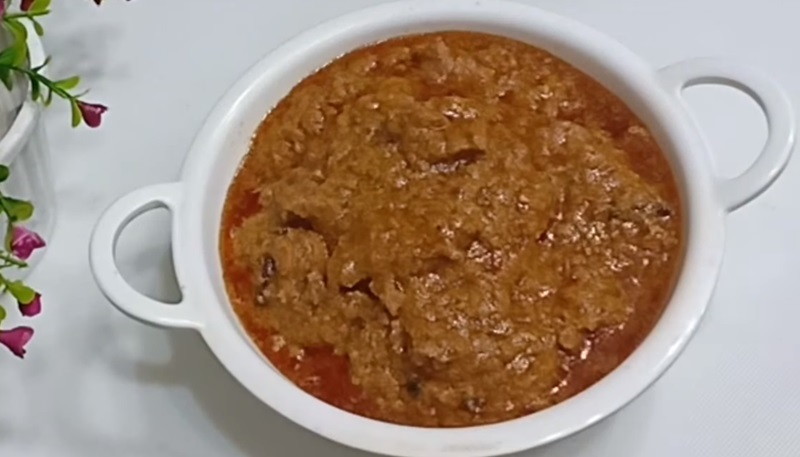
Pasanda is a popular North Indian dish known for its rich, creamy and aromatic flavors. It is a classic Mughlai dish that originated in the royal kitchens of the Mughal emperors. The word "pasanda" means favorite, and this dish truly lives up to its name. Traditionally, pasanda is made with thinly sliced pieces of tender meat, such as chicken, lamb or beef. The meat is marinated in a mixture of yogurt, spices, and papaya paste to ensure its tenderness. It is then cooked in a velvety sauce made from a blend of onions, tomatoes, ginger-garlic paste, and a variety of aromatic spices like cinnamon, cardamom, and cloves. The addition of cashew paste or cream gives the dish its rich and creamy texture. Pasanda is often garnished with fried onions, coriander leaves, and a sprinkle of roasted nuts, adding a delightful crunch and enhancing the visual appeal. It is usually served with naan bread or steamed rice, making it a wholesome and satisfying meal. The combination of tender meat, fragrant spices, and creamy sauce makes pasanda a true indulgence for the senses. It is a dish that showcases the opulence and sophistication of North Indian cuisine, making it a favorite among food lovers.
Makhan Bada

Makhan Bada is a popular North Indian dish that originates from the state of Uttar Pradesh. It is a delectable street food snack that is loved by locals and tourists alike. The dish derives its name from the key ingredient "makhan" which means butter, as it is generously used in the making of this mouth-watering dish. Makhan Bada is made from a batter consisting of urad dal (split black lentils), spices, and yogurt. The batter is then deep-fried until it turns golden brown and crispy. The fried fritters are then soaked in a rich and creamy gravy made from tomatoes, onions, ginger, garlic, and a blend of spices. The gravy is cooked slowly to ensure that all the flavors are well-incorporated. The end result is a dish that is bursting with flavors and textures. The crispy and fluffy fritters are perfectly complemented by the creamy and tangy gravy. Makhan Bada is often served with hot fluffy pooris or steamed rice, making it a wholesome and satisfying meal. Makhan Bada is a must-try dish for anyone visiting North India, as it showcases the region's rich culinary heritage and the love for indulgent flavors.
Kalakand
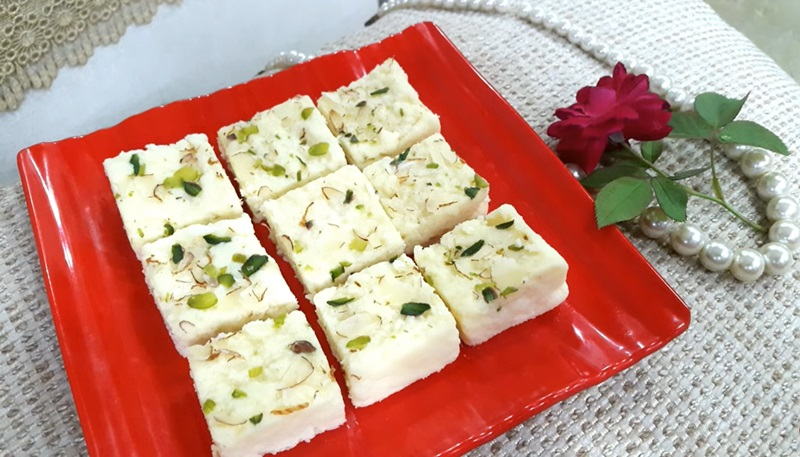
Kalakand is a popular North Indian sweet dish that originated in the state of Uttar Pradesh. It is a traditional dessert made with milk and sugar, and is known for its soft and grainy texture. The main ingredient for making Kalakand is freshly prepared paneer (cottage cheese), which is cooked with condensed milk and flavored with cardamom powder and saffron strands. Nuts such as almonds and pistachios are often added to enhance the taste and add a crunchy texture. The process of making Kalakand involves boiling the milk until it thickens and reduces to a solid consistency. The paneer is then added to the milk along with sugar and cooked until it forms a thick mixture. This mixture is then spread in a greased tray and garnished with nuts before being left to set. Once set, it is cut into square or diamond-shaped pieces and served as a delightful dessert. Kalakand is loved for its rich and creamy taste, and its melt-in-your-mouth texture. It is commonly enjoyed during festivals and special occasions, and is also a popular treat during the festive season of Diwali. Whether it is consumed as a dessert or offered as a gift, Kalakand is a cherished part of North Indian cuisine.
Rabri
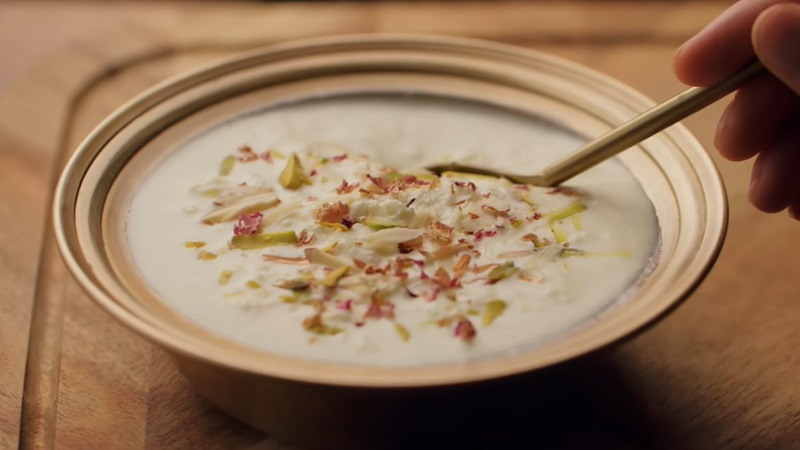
Rabri is a popular North Indian dessert that is rich, creamy, and utterly delicious. It is made by boiling milk on low heat for a long duration until it thickens and reduces to almost half its original quantity. As the milk simmers, a layer of cream forms on top, which is carefully collected and mixed back into the milk, adding to the dish's lusciousness. To enhance the flavor, the milk is often infused with cardamom, saffron, and chopped nuts like almonds and pistachios. As the milk continues to cook, it caramelizes, imparting a slightly sweet and nutty taste to the dish. The result is a thick, creamy, and grainy texture that is a delight to the taste buds. Rabri can be enjoyed on its own as a dessert or used as a topping for other Indian sweets like jalebi or malpua. It is often served chilled, making it perfect for hot summer days. Its rich and indulgent taste, combined with the aromatic spices, makes Rabri an irresistible treat that is loved by people of all ages.
Boondi
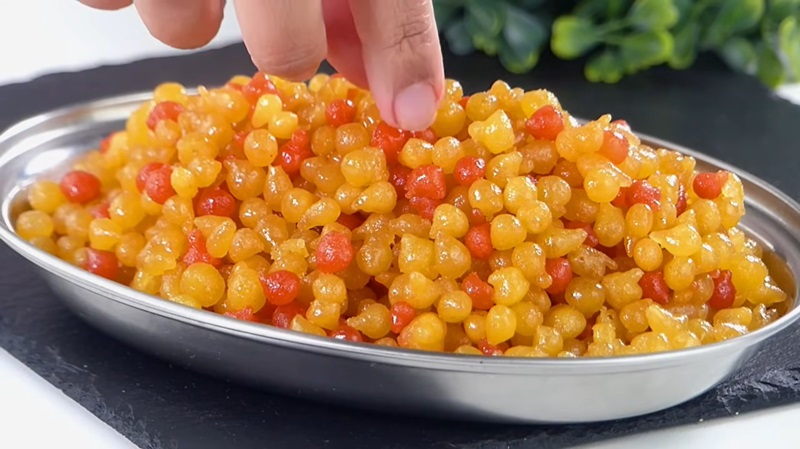
Boondi is a popular North Indian dish that is known for its unique combination of flavors and textures. It is made using tiny fried gram flour droplets, also known as boondi, which are crispy and golden in color. The dish is typically sweet and savory, making it a versatile option for different tastes and preferences. To prepare boondi, the gram flour batter is mixed with water to create a smooth consistency. This batter is then dropped into hot oil using a perforated ladle, resulting in small, round boondi droplets. These droplets are fried until they turn crispy and are then removed from the oil. Sweet boondi is made by tossing the fried boondi in a sugar syrup flavored with cardamom and saffron. This creates a deliciously sweet and aromatic dish that is often served as a dessert or during festive occasions. On the other hand, savory boondi is seasoned with spices like chaat masala, cumin, and black salt, giving it a tangy and spicy flavor. Savory boondi is commonly enjoyed as a snack or as a topping for savory dishes like raita or chaat. With its contrasting flavors and textures, boondi is a delightful dish that showcases the richness and diversity of North Indian cuisine. Whether you prefer it sweet or savory, boondi is sure to satisfy your taste buds and leave you craving for more.
Laal Maans
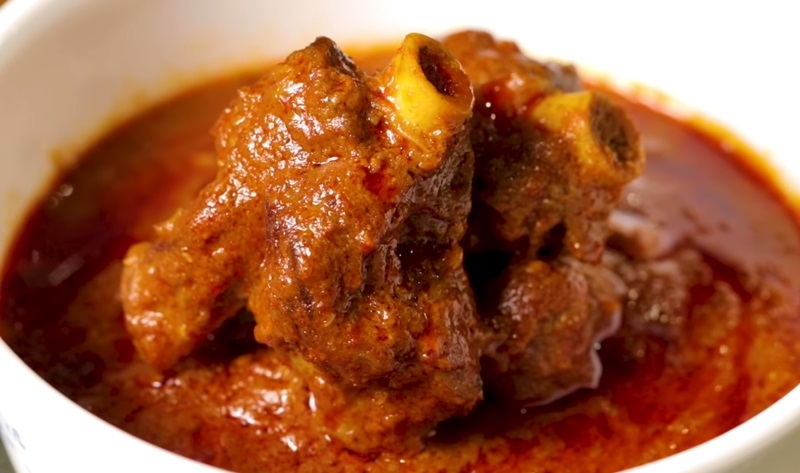
Laal maans is a popular and delectable dish from the North Indian state of Rajasthan. It is a rich and spicy meat curry that is traditionally made with mutton, although variations with chicken and other meats can also be found. The name "laal maans" translates to "red meat" in Hindi, which perfectly describes the vibrant red color of the curry. The key ingredient that gives laal maans its distinct flavor and hue is the use of a variety of spices, including red chili powder, turmeric, coriander, and garam masala. These spices are meticulously blended to create a fiery and aromatic gravy. The curry is usually cooked slowly, allowing the meat to absorb all the flavors and become tender and succulent. Laal maans is a favorite among meat lovers due to its bold and robust taste. It is often enjoyed with Indian breads like roti or naan, and is best paired with a cooling side dish, such as raita or salad, to balance the heat. This dish is a true representation of the rich culinary heritage of Rajasthan and is sure to leave your taste buds craving for more.
Paneer Tikka Masala
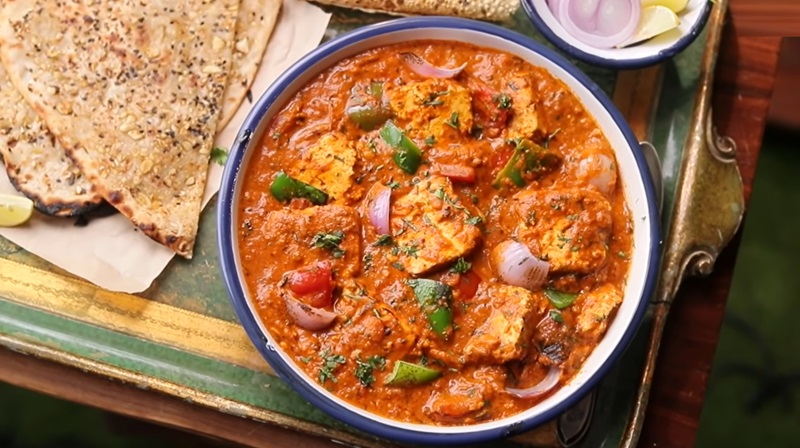
Paneer tikka masala is a popular North Indian dish that combines succulent pieces of paneer (Indian cottage cheese) with a rich and flavorful tomato-based gravy. This vegetarian delicacy is a favorite among both locals and foreigners, known for its aromatic spices and creamy texture. To prepare this dish, cubes of paneer are marinated in a mixture of yogurt, spices, and lemon juice. The marinated paneer is then skewered and grilled until it is slightly charred and has a smoky flavor. The gravy is prepared by sautéing onions, garlic, and ginger in oil, and then adding a blend of spices such as cumin, coriander, turmeric, and garam masala. Tomatoes are then added and cooked until they soften, forming a thick and tangy base. The grilled paneer is added to the gravy and simmered until it absorbs all the flavors. Paneer tikka masala is typically garnished with fresh coriander leaves and served with naan bread or rice. The combination of the tender paneer, aromatic spices, and luscious gravy creates a mouth-watering experience that is loved by vegetarians and non-vegetarians alike.
Makki Ki Roti
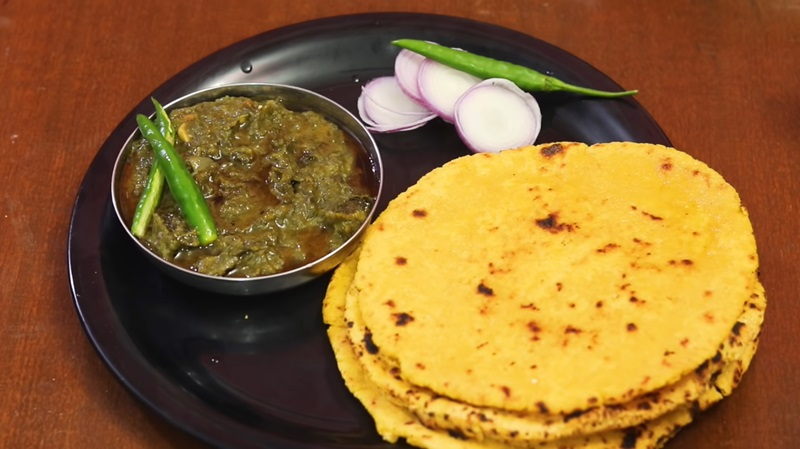
Makki ki roti is a traditional North Indian dish that holds a special place in the hearts of many. It is a flatbread made primarily from cornmeal, known as makki ka atta, which gives it a distinctive yellow color and a slightly coarse texture. This dish is popularly enjoyed during the winter season when fresh corn is abundant. To prepare makki ki roti, the cornmeal is mixed with water and kneaded into a dough. The dough is then divided into small portions, which are flattened and cooked on a hot griddle until they turn golden brown and slightly crispy. The rotis are typically served hot with a dollop of homemade butter or ghee. Makki ki roti is often paired with sarson ka saag, a delicious and nutritious mustard greens curry. The combination of the earthy and slightly sweet taste of the roti with the spicy and tangy flavors of the saag creates a harmonious balance that is loved by many. This dish is not only a delight to the taste buds but also a great source of energy. It is rich in dietary fiber, vitamins, and minerals, making it a healthy choice. Makki ki roti perfectly embodies the warmth and flavors of North Indian cuisine, making it a beloved and comforting dish for many.
Paneer Tikka
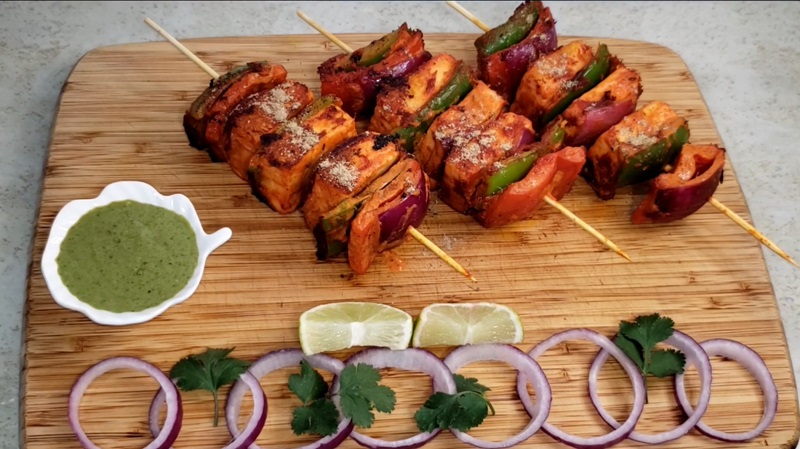
Paneer tikka is a popular North Indian dish that is loved for its rich flavors and succulent textures. It is a vegetarian delight that consists of cubes of paneer (Indian cottage cheese) marinated in a spiced yogurt mixture and then grilled or baked until golden and slightly charred. The marination plays a crucial role in enhancing the taste of the dish. A blend of aromatic spices like cumin, coriander, turmeric, and garam masala is mixed with yogurt, ginger-garlic paste, and a squeeze of lemon juice to create a flavorful marinade. The paneer cubes are then coated with this marinade and left to marinate for a few hours, allowing the flavors to penetrate the cheese. Once marinated, the paneer cubes are skewered and cooked on a hot grill or in a tandoor (traditional clay oven) until they develop a beautiful smoky aroma and a slightly crispy exterior. The resulting dish is a perfect balance of tanginess, spiciness, and creaminess. Paneer tikka is often served as an appetizer or starter, accompanied by mint chutney or tamarind chutney. It can also be enjoyed as a main course, paired with naan bread or rice. This versatile dish is a favorite among vegetarians and non-vegetarians alike, showcasing the richness and diversity of North Indian cuisine.
Mathri
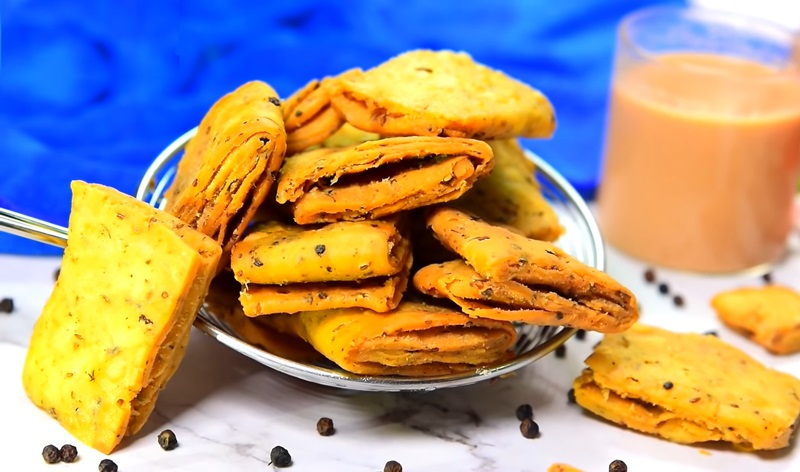
Mathri is a popular North Indian snack that is loved for its crispy and savory taste. It is a deep-fried biscuit made from a combination of all-purpose flour, semolina, and spices. The dough is kneaded with ghee or oil, giving it a rich and flaky texture. Various spices such as cumin seeds, black pepper, and red chili powder are added to enhance the flavor. The dough is then rolled out into small discs or squares and deep-fried until golden brown. The result is a crunchy and aromatic snack that can be enjoyed on its own or with a cup of tea. Mathri is often served during festivals and special occasions in North India, as it is believed to bring good luck and prosperity. Mathri can be enjoyed in different variations, such as masala mathri, which is spiced with a blend of aromatic spices, or the sweet mathri, which is flavored with sugar and cardamom. It is a versatile snack that can be stored for a long time, making it a popular choice for travel or as a tea-time snack. Overall, mathri is a delightful and flavorful dish that represents the rich culinary heritage of North India.
Bhatura
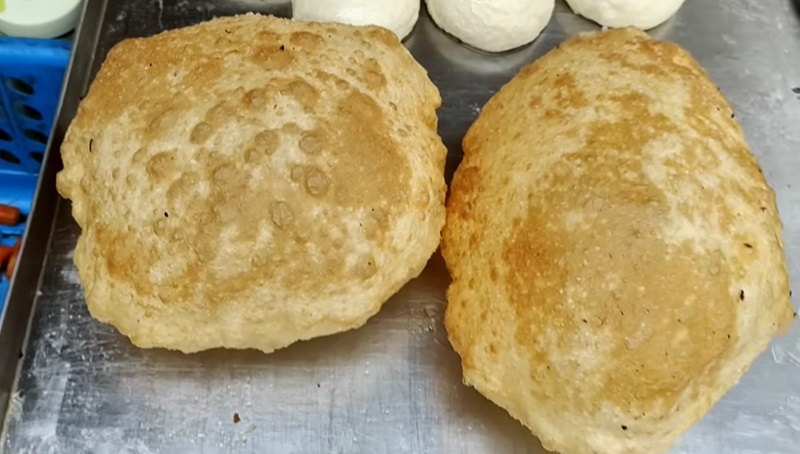
Bhatura is a popular and delicious dish that hails from North India. It is a deep-fried bread made from a combination of all-purpose flour, yogurt, semolina, and a pinch of sugar. The dough is kneaded to a soft and elastic consistency and then left to rest for a few hours. This resting period helps in making the bhaturas light, fluffy, and full of flavor. Once the dough has rested, small balls are rolled out into circular shapes and deep-fried until they puff up. The result is a golden and crispy bread with a soft and airy interior. Bhaturas are usually enjoyed with chole, a spicy chickpea curry, which complements the bread's texture and taste perfectly. The dish is often served as a breakfast or lunch option and is also a popular street food item. The combination of the crispy bhatura and the tangy and spicy chole makes it a fulfilling and satisfying meal. Bhatura is loved by people of all ages and is a staple at festive occasions and celebrations. In conclusion, bhatura is a delightful North Indian dish that showcases the region's rich culinary heritage. Its crispy and fluffy texture, along with the delectable chole, makes it a must-try for all food enthusiasts.
Tahri
-1709136131.jpg)
Tahri is a popular and flavorful North Indian rice dish that originated in the region of Uttar Pradesh. It is a vegetarian dish that is primarily made with basmati rice, vegetables, and aromatic spices. Tahri is often considered a variation of the famous biryani, but with a milder taste and less complex preparation. The key ingredients of Tahri include rice, onions, tomatoes, green peas, carrots, and potatoes. It is spiced with a blend of fragrant spices such as cumin, coriander, turmeric, and garam masala. The rice is cooked with these spices and vegetables, giving it a beautiful yellow color and a delightful aroma. Tahri is a versatile dish that can be enjoyed on its own or served as a side dish with various curries and raita. It is loved for its simplicity, yet rich flavors. The combination of tender rice, crunchy vegetables, and aromatic spices creates a satisfying and comforting dish. Whether prepared at home or enjoyed at a local restaurant, Tahri is a beloved North Indian dish that showcases the region's culinary heritage. Its delightful taste and vibrant colors make it a favorite among both locals and visitors.
Laapsi
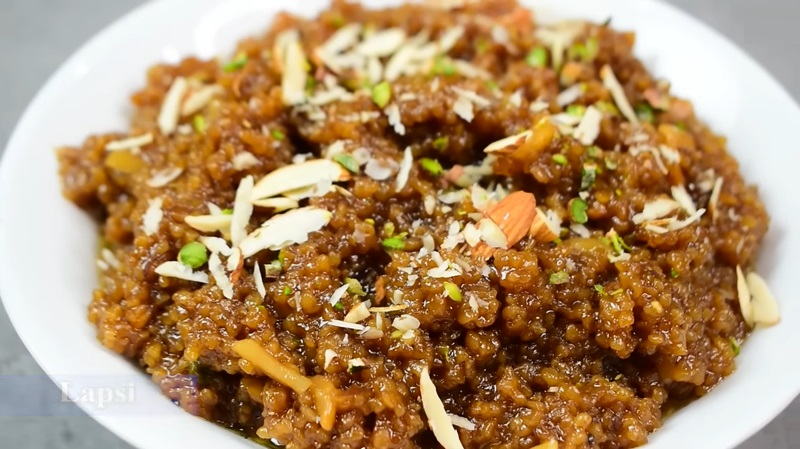
Laapsi is a traditional North Indian dessert that originates from the state of Rajasthan. It is a sweet dish made from broken wheat, ghee (clarified butter), sugar, and a variety of nuts and dried fruits. To prepare Laapsi, the broken wheat is first roasted in ghee until it turns golden brown and releases a nutty aroma. Then, water is added to cook the wheat until it becomes soft and fully cooked. Sugar is added to sweeten the dish, and it is further cooked until the sugar is completely dissolved and the mixture thickens. Laapsi is often garnished with a generous amount of chopped nuts such as almonds, cashews, and pistachios, as well as dried fruits like raisins and dates. These toppings not only add a crunch to the dish but also enhance its flavor and texture. This delicious dessert is typically served warm or at room temperature and is enjoyed during festivals and special occasions. Its rich and sweet taste, combined with the wholesome goodness of broken wheat and nuts, makes Laapsi a delightful treat for anyone with a sweet tooth.
Mughlai Paratha
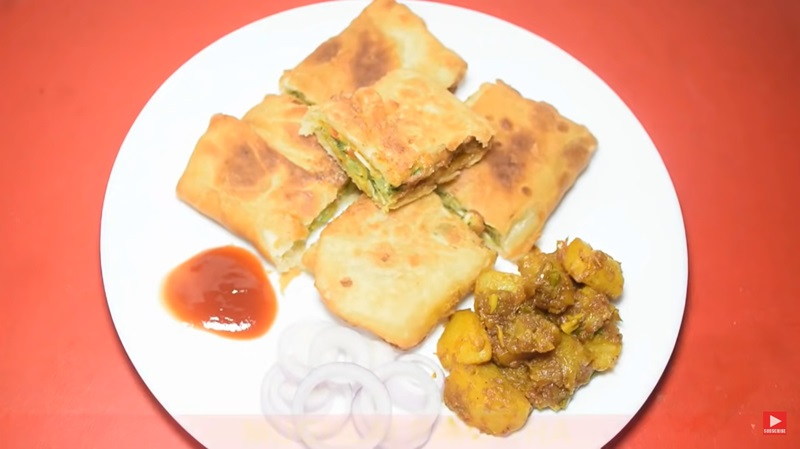
Mughlai paratha is a delectable and popular dish from North Indian cuisine. It is a stuffed paratha, which is a type of Indian bread, traditionally filled with a rich and flavorful mixture of minced meat, onions, and aromatic spices. The preparation of Mughlai paratha involves kneading dough made from flour, water, and oil, which is then rolled out into a thin circular shape. The filling, made with minced meat such as chicken or mutton, is cooked with a blend of spices like cumin, coriander, ginger, garlic, and garam masala to create a fragrant and savory mixture. This flavorful stuffing is then placed in the center of the rolled-out dough, and the edges are folded over to seal it. The stuffed paratha is then cooked on a hot griddle with a generous amount of ghee or oil until it turns golden brown and crispy. The end result is a mouthwatering and satisfying dish that is often served with yogurt, pickles, or chutneys. Mughlai paratha is known for its rich and indulgent flavors, combining the earthiness of the meat with the aromatic spices. It is a popular choice for breakfast, brunch, or even as a main course in North Indian households and eateries.
Bhalla
-1708928649.jpg)
Bhalla, a popular North Indian dish, is a sumptuous and flavorful delicacy that is commonly enjoyed as a street food snack or appetizer. These delectable deep-fried lentil dumplings are made from a blend of soaked and ground urad dal, which is then mixed with spices and herbs to create a rich batter. The batter is then carefully shaped into small flat discs or balls and deep-fried until golden brown. Once the bhallas are cooked to perfection, they are soaked in a tangy and refreshing tamarind chutney and garnished with a variety of toppings that add a burst of flavors and textures. Common toppings include creamy yogurt, finely chopped onions, fresh coriander leaves, and a sprinkle of spice mixtures such as chaat masala or roasted cumin powder. The combination of the crispy outer layer of the bhallas, the soft and fluffy interior, and the sweet and tangy chutney creates a delightful contrast of tastes and textures. Bhallas are not only a treat for the taste buds but also a visual delight with their vibrant colors and garnishes. Whether enjoyed alone or as part of a chaat platter, bhallas are a must-try dish for anyone looking to indulge in the rich and diverse flavors of North Indian cuisine.
Baati
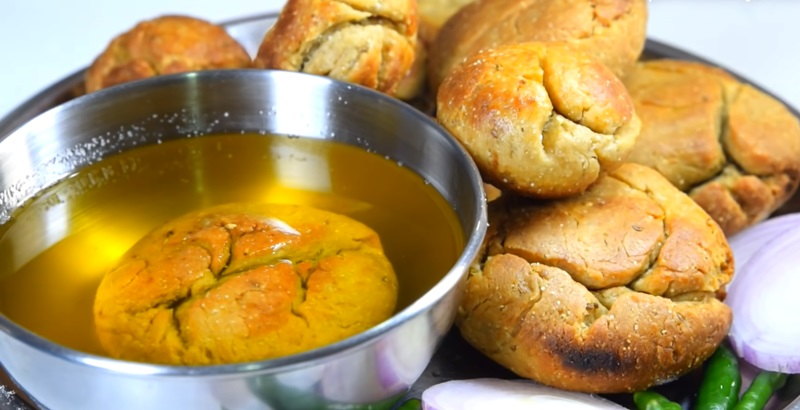
Baati is a traditional North Indian dish that originates from the state of Rajasthan. It is a flavorful and wholesome dish that consists of a baked wheat bread served with a variety of accompaniments. The preparation of Baati involves kneading wheat flour with ghee (clarified butter), yogurt, and spices. The dough is then shaped into small round balls and baked in a traditional clay oven called a tandoor. The result is a crisp and golden brown bread with a soft and fluffy interior. Baati is typically served with a generous dollop of ghee and a side of dal (lentil curry) and churma (a sweet crumbled wheat dish). It is common to find variations of Baati, such as masala baati (spiced bread) or stuffed baati filled with a mixture of lentils, spices, and sometimes even paneer (Indian cottage cheese). The combination of the crispy baati, creamy dal, and sweet churma creates a perfect balance of flavors and textures. Baati is not only a delicious dish but also a filling and nutritious meal that is loved by people of all ages in North India.
Puri bhaji
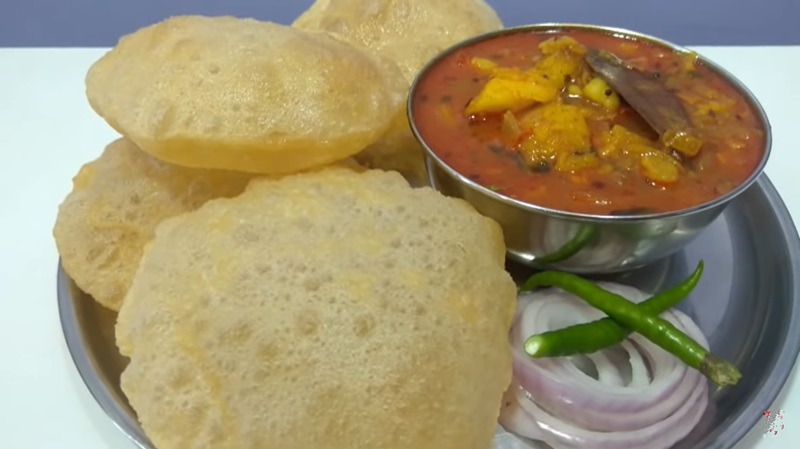
Puri bhaji is a popular North Indian dish that consists of deep-fried bread called puris served with a spicy potato curry known as bhaji. It is a classic breakfast or brunch dish that is loved by people of all ages. The puris are made by kneading wheat flour with water and a pinch of salt to form a smooth dough. The dough is then rolled into small circles and deep-fried until they puff up and turn golden brown. The puris are crispy on the outside and soft on the inside. The bhaji, on the other hand, is a flavorful curry made with boiled and mashed potatoes sautéed with onions, tomatoes, and a blend of aromatic spices like cumin, turmeric, coriander, and garam masala. The curry is cooked until the potatoes are coated in a thick and spicy gravy. Puri bhaji is often served with a side of tangy and spicy pickle or chutney, along with a glass of refreshing buttermilk. It is a fulfilling and satisfying meal that can be enjoyed at any time of the day. Overall, puri bhaji is a delicious and comforting dish that showcases the rich and vibrant flavors of North Indian cuisine.
Churma
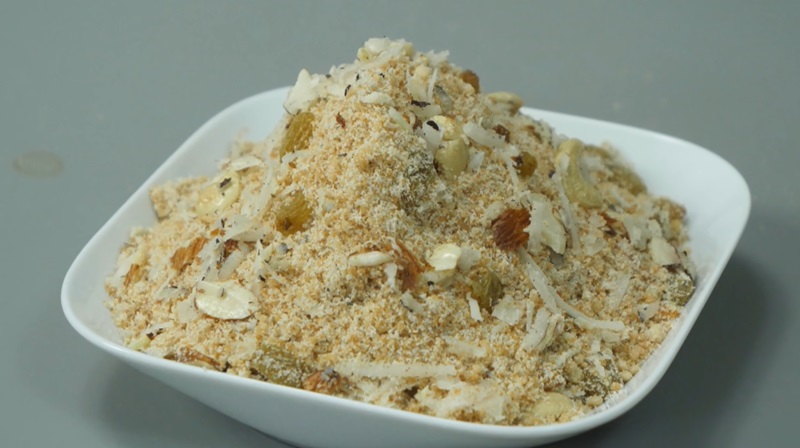
Churma is a traditional North Indian dish that holds a special place in the hearts and palates of the people of Rajasthan. It is a delicious and wholesome dessert made from coarsely ground wheat flour, ghee (clarified butter), and jaggery (unrefined sugar). To prepare this dish, the wheat flour is first roasted until it turns golden brown, then it is mixed with ghee and jaggery to form a crumbly texture. The mixture is then shaped into small balls or laddoos. Churma is typically served with popular Rajasthani dishes like dal baati churma, where the churma laddoos are crumbled and mixed with ghee and served alongside lentils and baked wheat balls called baatis. The combination of flavors is truly delightful, with the sweetness of the churma balancing the spiciness of the dal and baati. Churma is not only a delectable dessert but also a rich source of energy. It is often prepared during festive occasions and celebrations, as it is considered auspicious. The dish is loved for its simplicity, earthy flavors, and the comfort it brings. So, if you ever get a chance to try North Indian cuisine, don't miss out on the heavenly taste of churma.
Egg bhurji

Egg bhurji is a popular North Indian dish that is loved by many. It is a delicious and savory scrambled egg dish that is packed with flavors and spices. The dish is made by whisking eggs and then cooking them with a variety of ingredients such as onions, tomatoes, green chilies, and spices like turmeric, cumin, and red chili powder. The process starts by sautéing onions in oil until they turn golden brown. Then, tomatoes are added along with spices, creating a rich and aromatic base. The eggs are then added to the mixture and cooked on low heat, constantly stirring to create a scrambled texture. The result is a dish that is both creamy and flavorful. Egg bhurji is often enjoyed as a breakfast option, served with piping hot parathas or buttered toast. It can also be served as a side dish with rice or roti. The dish is versatile and can be customized with additional ingredients like capsicum, peas, or even cheese. Overall, egg bhurji is a must-try dish for egg lovers and a great way to experience the vibrant flavors of North Indian cuisine.
Mohanthal
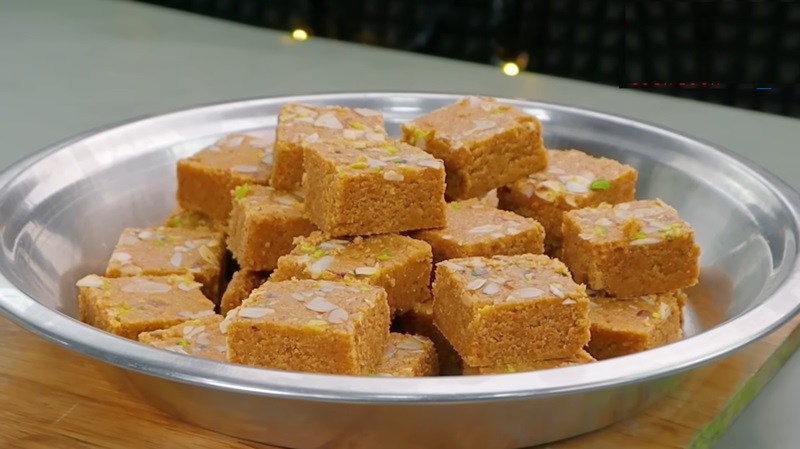
Mohanthal is a traditional North Indian sweet dish that originates from the state of Gujarat. It is a popular dessert made during festivals and special occasions. Mohanthal is a rich and indulgent sweet that is loved by people of all ages. The main ingredient of Mohanthal is besan (gram flour), which is roasted in ghee (clarified butter) until it turns golden brown. This gives the dish a nutty and aromatic flavor. The roasted besan is then mixed with sugar syrup, cardamom powder, and chopped nuts like almonds and pistachios. The mixture is then set in a rectangular tray and cut into square or diamond-shaped pieces once it cools down. The final product is a dense and fudgy sweet with a melt-in-your-mouth texture. The garnishing of chopped nuts on top adds a delightful crunch and enhances the overall taste. Mohanthal is known for its rich flavor and is often enjoyed with a cup of chai (tea). It is a perfect treat for those with a sweet tooth and is often exchanged as gifts during festive seasons. Mohanthal is a true reflection of the richness and diversity of North Indian cuisine.
Tilsakri
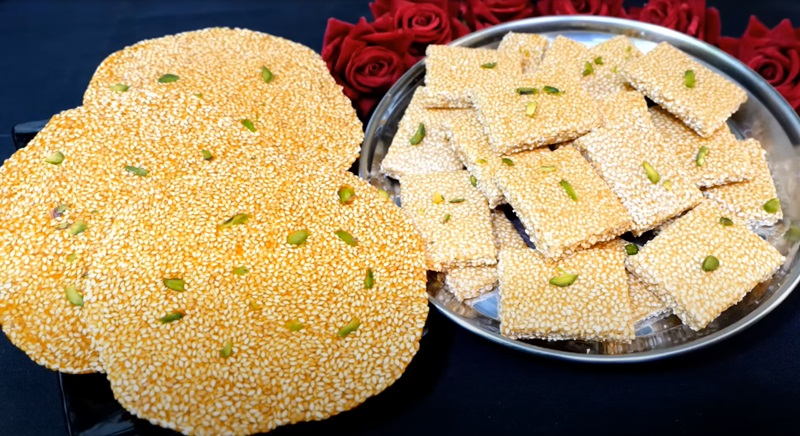
Tilsakri dish is a traditional North Indian recipe that is widely popular in the region. It is a delectable combination of til (sesame seeds) and kri (vegetables). This dish showcases the rich and diverse flavors of North Indian cuisine. To prepare Tilsakri dish, a variety of vegetables such as potatoes, carrots, peas, and beans are finely chopped and sautéed in a blend of aromatic spices like cumin, turmeric, and red chili powder. The vegetables are then cooked to perfection, retaining their natural flavors and textures. The highlight of this dish is the generous use of til or sesame seeds, which adds a nutty and earthy flavor to the dish. The sesame seeds are toasted and ground into a coarse powder, which is then added to the vegetables, giving it a unique taste and texture. Tilsakri dish is typically served hot with roti or rice, making it a wholesome and satisfying meal. The combination of vegetables and sesame seeds not only adds a burst of flavors but also provides essential nutrients, making it a healthy choice. Overall, Tilsakri dish is a delightful North Indian delicacy that embodies the essence of the region's cuisine with its vibrant flavors and wholesome ingredients.
Aloo gosht
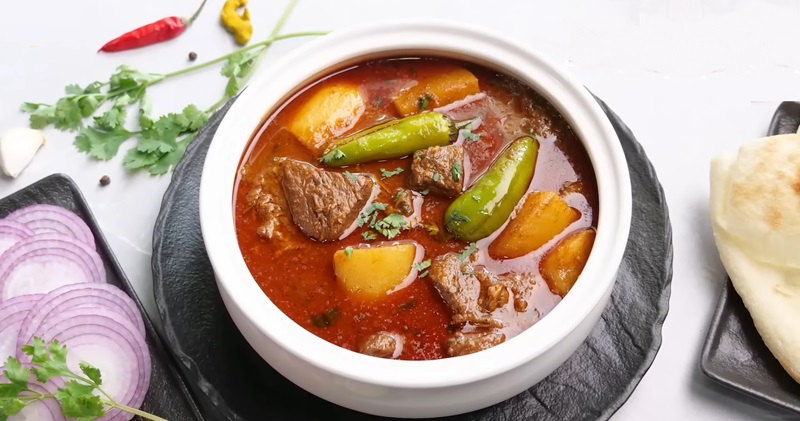
Aloo Gosht is a popular dish in North Indian cuisine that combines the flavors of potatoes (aloo) and tender meat (gosht) in a delicious and hearty curry. This dish is often made with lamb or mutton, although it can also be prepared with chicken or beef. To make Aloo Gosht, the meat is first marinated with a mixture of yogurt, ginger, garlic, and spices like cumin, coriander, and turmeric. It is then cooked until tender and flavorful. Potatoes are added to the curry, absorbing the rich flavors of the meat and spices. The resulting dish is a perfect balance of tender meat and soft potatoes, immersed in a thick and aromatic gravy. The spices used in Aloo Gosht add warmth and depth to the dish, while the yogurt helps to tenderize the meat and create a creamy texture. Aloo Gosht is often served with fragrant basmati rice or naan bread, making it a satisfying and wholesome meal. This classic North Indian dish is loved for its comforting flavors and is a favorite among meat lovers in the region.
Mattha
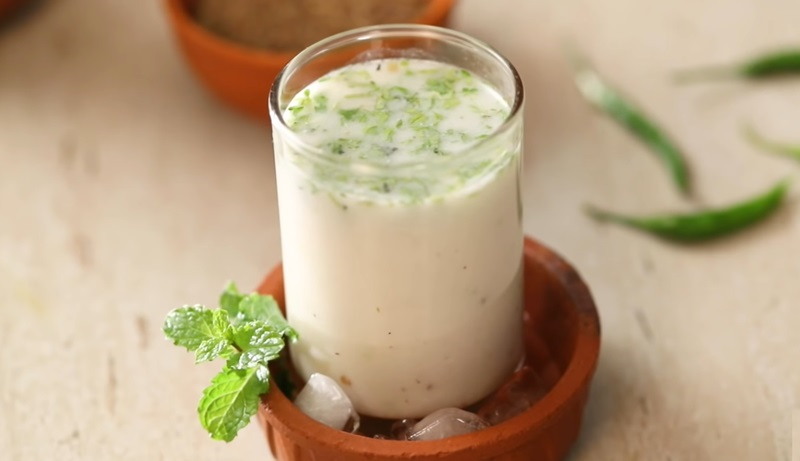
Mattha is a traditional North Indian beverage that is commonly consumed during summers for its cooling properties. It is a refreshing and tangy drink made from yogurt, water, and various spices. The primary ingredients of Mattha include yogurt, black salt, roasted cumin powder, mint leaves, and coriander leaves. To prepare Mattha, yogurt is whisked with water to achieve a thin consistency. Then, black salt, roasted cumin powder, and other spices are added to enhance the flavor. Mint leaves and coriander leaves are finely chopped and added to the mixture, giving it a fresh and aromatic touch. The mixture is then thoroughly mixed and refrigerated to allow the flavors to meld. Mattha is known for its numerous health benefits. It aids digestion, cools the body, and replenishes essential nutrients. It is often served chilled and garnished with a sprig of mint or a pinch of roasted cumin powder. In North India, Mattha is a popular accompaniment to meals, especially during hot summer days. Its tangy taste and refreshing nature make it a perfect thirst quencher. Whether enjoyed on its own or paired with spicy Indian dishes, Mattha is a beloved and quintessential part of North Indian cuisine.
Shahi Tukra
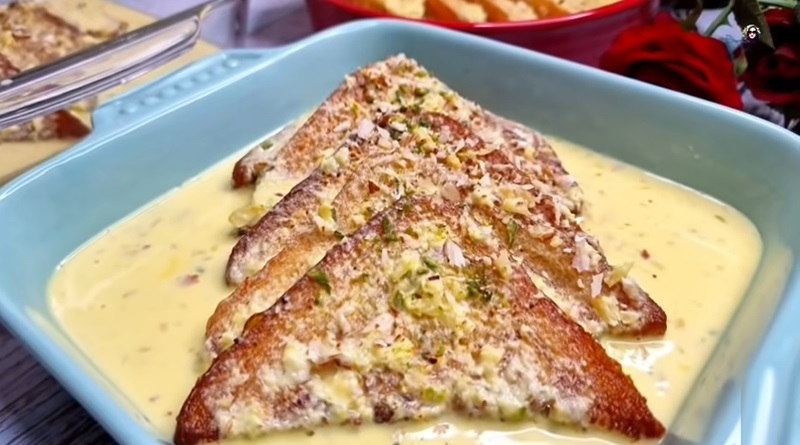
Shahi Tukra is a delectable dessert that is a popular part of North Indian cuisine. This rich and indulgent dish is made with bread slices that are fried until crispy and then soaked in a fragrant milk mixture. The milk mixture is infused with aromatic spices like cardamom and saffron, giving it a heavenly flavor. The soaked bread slices are then garnished with a generous amount of nuts, such as almonds and pistachios, and drizzled with a luscious syrup made from sugar and rose water. The Shahi Tukra is known for its creamy and velvety texture, making it a true delight for the taste buds. It is often served chilled, allowing the flavors to meld together and creating a refreshing contrast to the richness of the dish. This dessert is a perfect ending to a traditional North Indian meal and is often enjoyed during festivals and special occasions. Shahi Tukra is not only a treat for the palate but also a feast for the eyes, with its vibrant colors and beautiful presentation. Its royal and decadent taste makes it a favorite among dessert lovers, leaving a lasting impression with every bite.
Dal bati churma
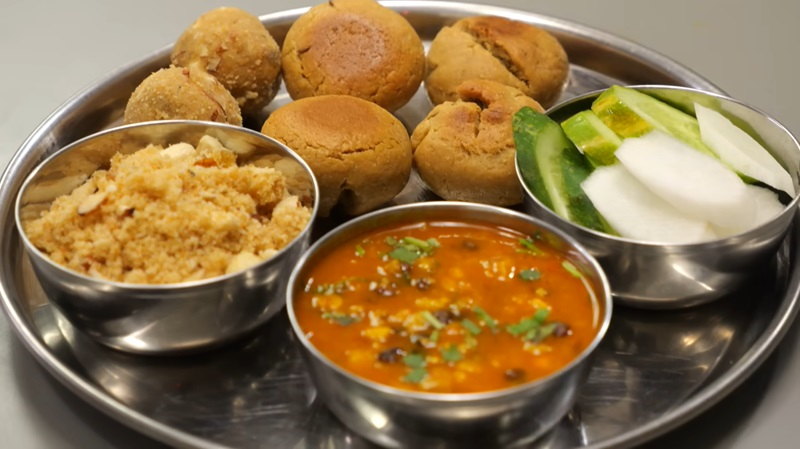
Dal Bati Churma is a traditional and popular dish from North Indian cuisine, particularly Rajasthan. It consists of three components - dal, bati, and churma - each bringing a unique flavor and texture to the meal. The dal, a thick lentil soup, is made by simmering a mix of lentils with spices like turmeric, cumin, and garam masala. It is cooked to perfection, resulting in a creamy and flavorful dish that pairs well with the other elements. Bati is a round-shaped bread made from wheat flour, semolina, and ghee. It is traditionally baked in a clay oven or tandoor, giving it a crispy outer layer and a soft, fluffy interior. The bati is usually served with ghee or clarified butter, which adds richness and enhances its taste. Churma, the final component, is a sweet and crumbly dessert made from coarsely ground wheat flour, ghee, and jaggery. It is often flavored with cardamom and garnished with nuts. Churma provides a delightful contrast to the savory dal and bati, adding a sweet ending to the meal. Dal Bati Churma is not only a delicious combination of flavors and textures but also a wholesome and fulfilling meal. It is often served with other accompaniments like pickles, buttermilk, and salad, making it a complete and satisfying culinary experience.
Jeera bhaat
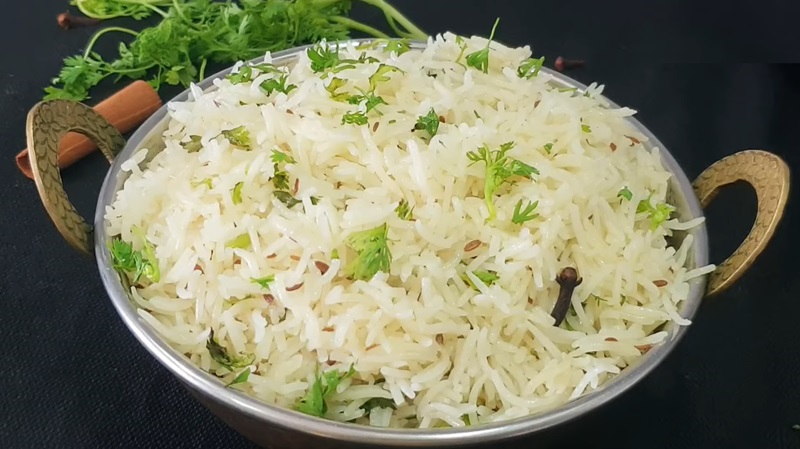
Jeera bhaat is a popular North Indian dish that is known for its aromatic flavors and simplicity. It is a rice dish that is flavored with cumin seeds, also known as jeera in Hindi. The dish is a perfect blend of spices and is often enjoyed as a main course or as a side dish. To prepare jeera bhaat, basmati rice is cooked with ghee (clarified butter) and whole cumin seeds. The cumin seeds are toasted in the hot ghee, releasing their distinct earthy aroma. The rice is then added to the mixture and cooked until it is fluffy and each grain is separate. The dish is often garnished with fresh coriander leaves, which adds a fresh and vibrant touch. Jeera bhaat is a versatile dish that can be enjoyed on its own or paired with a variety of curries, lentils, or vegetables. Its simplicity in preparation allows the flavors of the rice and cumin seeds to shine through, making it a favorite among both vegetarians and non-vegetarians. The dish is not only delicious but also has several health benefits. Cumin seeds are known for their digestive properties and are believed to aid in digestion. Additionally, basmati rice is low in fat and high in carbohydrates, making it a good source of energy. Overall, jeera bhaat is a delightful and flavorful rice dish that captures the essence of North Indian cuisine. Its aromatic flavors and simplicity make it a perfect addition to any meal.
Aloo mutter
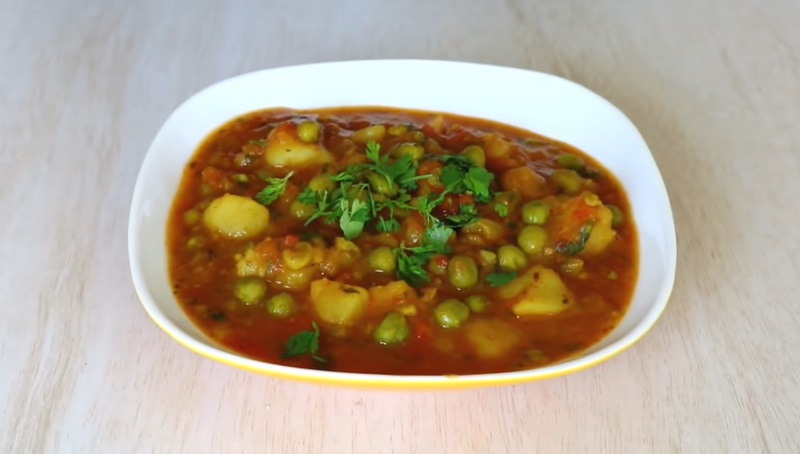
Aloo mutter is a popular and delicious dish hailing from North India. It is a perfect combination of potatoes (aloo) and green peas (mutter), cooked in a flavorful and aromatic gravy. The dish is known for its rich and creamy texture, as well as its spicy and tangy taste. To prepare aloo mutter, the potatoes are first boiled and then sautéed with onions, garlic, and ginger. A blend of spices such as turmeric, cumin, coriander, and garam masala is added to enhance the flavor. The green peas are then added to the mix, giving the dish a vibrant and fresh element. The gravy is made with a tomato base, which is cooked down with spices and a touch of cream to create a luscious and velvety sauce. This sauce coats the potatoes and peas, infusing them with its rich and tangy flavors. Aloo mutter is typically served with rice or Indian bread such as roti or naan. It is a hearty and satisfying dish that is loved by people of all ages. Whether enjoyed as a side dish or as a main course, aloo mutter is a staple in North Indian cuisine and a true delight for the taste buds.
Tarkari

Tarkari is a popular dish in North Indian cuisine that is loved for its vibrant flavors and rich textures. Tarkari, which translates to "vegetable" in Hindi, is a delicious vegetarian preparation that showcases the diverse range of vegetables found in the region. The dish typically consists of a medley of vegetables, such as potatoes, carrots, peas, and cauliflower, cooked in a flavorful blend of spices and herbs. The key to a good tarkari is the balance of spices, which include cumin, turmeric, coriander, and garam masala, among others. These spices infuse the vegetables with a warm and aromatic flavor that is both comforting and satisfying. Tarkari can be enjoyed on its own as a main course, or as a side dish to accompany rice or bread. It is often served with roti or paratha, which are Indian breads, to soak up the flavorful gravy. The dish is also versatile, as it can be customized to suit individual preferences by adding or omitting certain vegetables. Overall, tarkari is a delicious and wholesome dish that celebrates the abundance of vegetables in North Indian cuisine. Its flavorful taste and nutritious ingredients make it a favorite among vegetarians and non-vegetarians alike.
Doodh soda
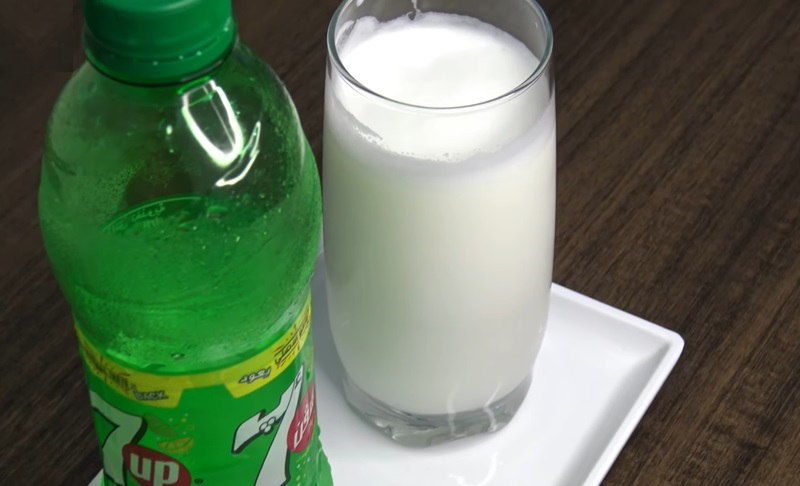
Doodh soda, also known as milk soda, is a popular and refreshing cold beverage from North India. It is a unique combination of milk and soda, creating a delightful and fizzy drink that is enjoyed by people of all ages. The preparation of doodh soda involves a simple yet interesting process. Firstly, chilled milk is poured into a glass, followed by the addition of soda or carbonated water. This creates a bubbly effect and gives the drink its characteristic fizz. To enhance the flavor, a pinch of salt or black salt is often added, which adds a slight tanginess to the otherwise creamy taste. Doodh soda is often garnished with a sprinkle of powdered cardamom or a few strands of saffron, adding a hint of aromatic and visually appealing elements. Sometimes, a dash of rose syrup or flavored syrup is also added to give it a sweet and floral twist. This refreshing beverage is perfect for hot summer days, as it provides instant refreshment and cools down the body. The creamy texture of milk combined with the effervescence of soda creates a unique and pleasurable experience for the taste buds. In conclusion, doodh soda is a delightful North Indian beverage that combines the creaminess of milk with the fizziness of soda. It is a popular choice for those seeking a refreshing and flavorful drink, especially during the hot summer months.
Aam panna
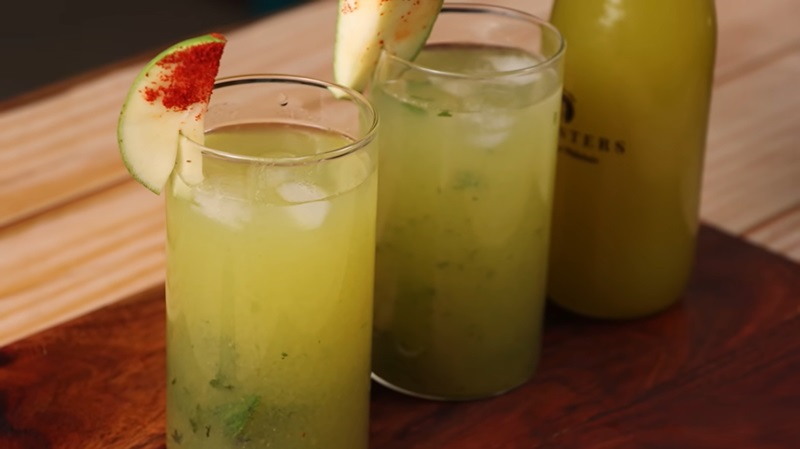
Aam panna is a popular traditional North Indian beverage that is prepared using raw mangoes. It is a refreshing and tangy summer cooler that is not only delicious but also has several health benefits. The dish is made by boiling raw mangoes until they become soft and then blending them to create a smooth pulp. This pulp is then mixed with a combination of spices like cumin powder, black salt, and mint leaves, along with sugar or jaggery for sweetness. The resulting drink is known for its vibrant green color and the perfect balance of sweet, sour, and savory flavors. Aam panna is not only a delicious summer beverage but also acts as a natural coolant for the body. It helps in preventing heat strokes, dehydration, and other summer-related ailments. The raw mangoes used in this dish are rich in vitamin C, which boosts immunity and aids in digestion. The addition of mint leaves provides a cooling effect and aids in digestion as well. Aam panna is usually served chilled and is a popular drink during the scorching summer months in North India. It is a perfect way to beat the heat and enjoy the goodness of raw mangoes in a refreshing and flavorful form.
Mirchi Bada
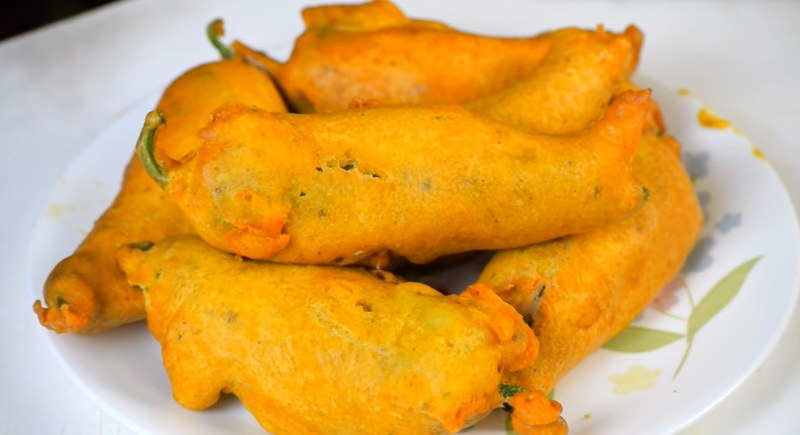
Mirchi Bada is a popular dish from North Indian cuisine that is loved for its spicy and flavorful taste. It is a delicious street food snack that consists of large green chillies stuffed with a spicy potato filling and deep-fried to perfection. The chillies are slit open and deseeded before being stuffed with a mixture of mashed potatoes, spices like cumin, turmeric, and red chili powder, and sometimes even nuts and raisins for added texture and taste. Once the chillies are stuffed, they are dipped in a batter made from gram flour (besan) and deep-fried until they turn golden brown and crispy. The batter coating gives the dish a crispy exterior while the spicy potato filling adds a burst of flavors. Mirchi Bada is typically served hot with a side of tangy tamarind chutney or mint chutney for a perfect balance of flavors. This dish is popularly enjoyed as a snack or appetizer and is often found in street food stalls or local eateries across North India. The combination of the fiery green chilies and the savory potato filling makes Mirchi Bada a favorite among spice lovers and those who enjoy bold flavors.
Allahabadi cake
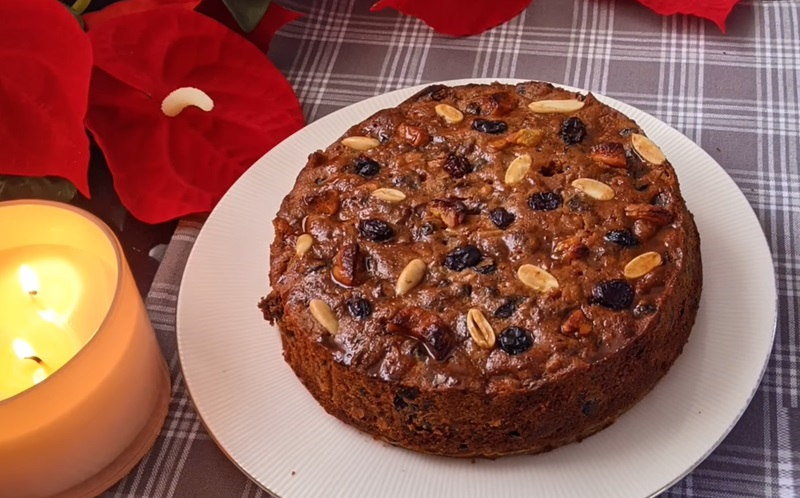
Allahabadi cake is a delicious and popular dish in North Indian cuisine. Originating from the city of Allahabad (now known as Prayagraj) in Uttar Pradesh, this cake is a unique fusion of Indian and European flavors. The cake is made using a blend of traditional Indian spices and ingredients like cardamom, saffron, and rose water, along with flour, sugar, eggs, and butter. The batter is then baked to perfection, resulting in a moist and flavorful cake with a rich aroma. What sets Allahabadi cake apart is its distinct taste and texture. The combination of aromatic spices and the sweetness of the cake creates a delightful experience for the taste buds. It is often garnished with nuts like almonds and pistachios, adding a crunchy element to every bite. Allahabadi cake is a popular dessert during festive occasions and celebrations in North India. It is enjoyed with a cup of hot tea or as a sweet treat after a meal. The unique blend of flavors and the cultural significance of this cake make it a must-try for anyone exploring North Indian cuisine.
Jeera aloo
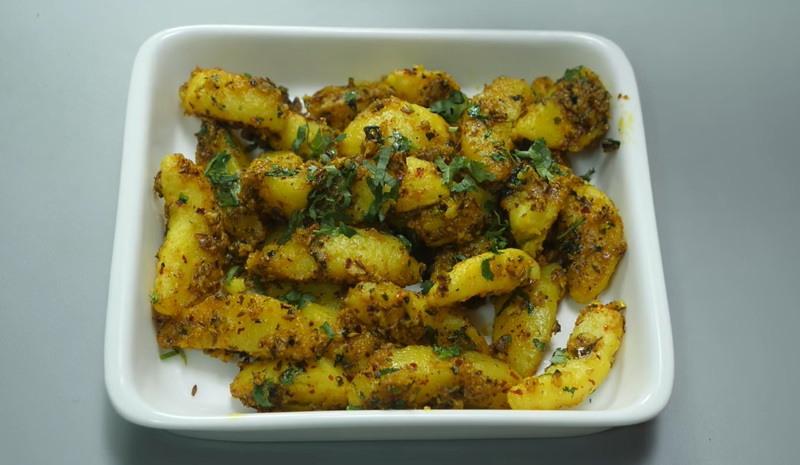
Jeera Aloo is a popular North Indian dish that is loved for its simple yet flavorful taste. As the name suggests, the star ingredient of this dish is "jeera" or cumin seeds. It is a vegetarian dish that is commonly served as a side dish or accompaniment to main meals. To prepare Jeera Aloo, boiled or parboiled potatoes are cooked with a tempering of cumin seeds in ghee or oil. The addition of cumin seeds not only enhances the taste but also provides a warm and earthy aroma to the dish. Other spices like turmeric, red chili powder, and coriander powder are often added to give it a mild kick and a beautiful golden color. Jeera Aloo is a versatile dish that can be customized to suit individual preferences. Some variations include the addition of chopped onions, green chilies, or tomatoes to enhance the flavor profile. It is usually garnished with fresh coriander leaves for a refreshing touch. This dish is loved for its simplicity and ability to complement a wide range of Indian breads like roti, paratha, or even rice dishes. With its aromatic flavors and comforting taste, Jeera Aloo has become a staple in North Indian cuisine, enjoyed by people of all ages.
Besan chakki
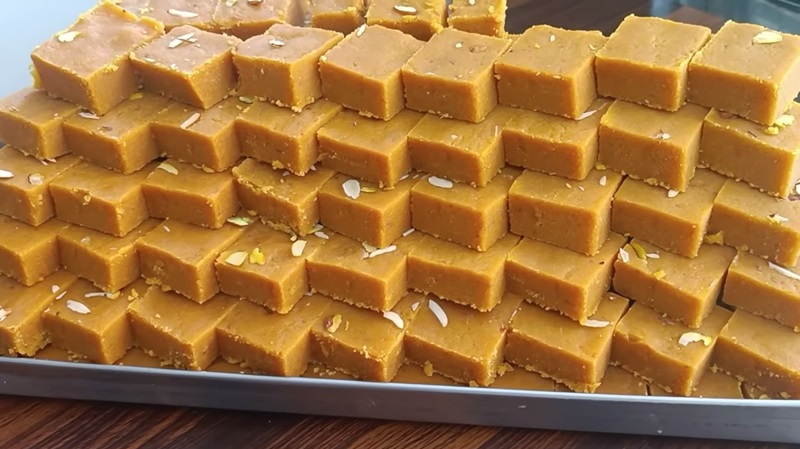
Besan chakki is a delectable dish from the North Indian cuisine that is loved for its unique texture and flavors. Made primarily with gram flour (besan), it is a simple yet satisfying snack that can be enjoyed anytime. To prepare besan chakki, the gram flour is roasted in ghee until it turns golden brown, releasing a fragrant aroma. The roasted besan is then mixed with powdered sugar, cardamom powder, and chopped nuts like almonds and pistachios. This mixture is then shaped into small round discs or squares, giving it a distinctive appearance. The besan chakki has a crumbly and melt-in-your-mouth texture, making it a delightful treat for dessert lovers. Its sweetness is perfectly balanced with the nuttiness of the gram flour and the warmth of cardamom. The addition of chopped nuts adds a delightful crunch to every bite. Besan chakki is often served during festivals and special occasions. It can be enjoyed on its own or paired with a cup of hot chai. Its simplicity and rich flavors make it a popular choice among people of all ages, and it is sure to leave a lasting impression on anyone who tries it.
Panchratna Dal
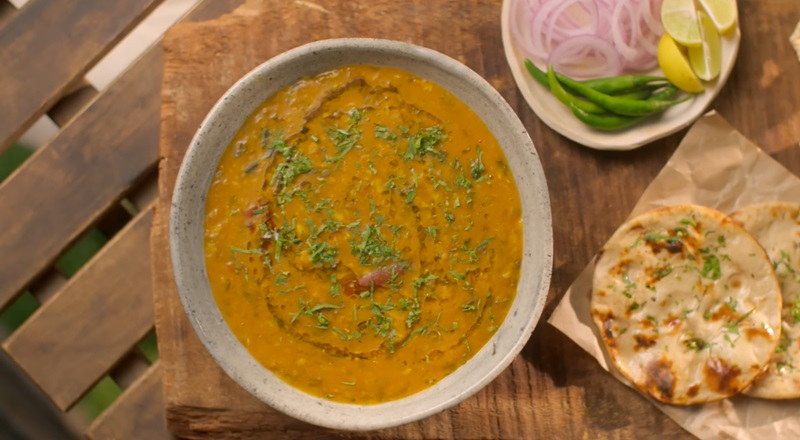
Panchratna Dal is a delicious and nutritious dish that originates from the North Indian cuisine. "Panchratna" translates to "five jewels," referring to the five different lentils used in this dish. These lentils include yellow moong dal, urad dal, masoor dal, chana dal, and toor dal, which are cooked together to create a harmonious blend of flavors and textures. To prepare Panchratna Dal, the lentils are first washed and soaked for a few hours to soften them. They are then cooked until tender, along with spices like turmeric, cumin, coriander, and garam masala, which infuse the dish with aromatic flavors. The lentils are simmered in a rich and creamy tomato-based gravy, which further enhances the taste. Panchratna Dal is not only delicious but also highly nutritious. Lentils are a great source of protein, fiber, and essential minerals, making this dish a healthy addition to any meal. It is typically served hot with steamed rice or Indian bread like naan or roti. With its vibrant flavors and wholesome ingredients, Panchratna Dal is a popular and comforting dish that showcases the diversity and richness of North Indian cuisine.
Kanji (drink)
-1709172985.jpg)
Kanji is a traditional North Indian drink that is made during the festival of Holi. It is a fermented rice beverage that is known for its tangy and sour taste. The preparation of Kanji involves soaking rice and black carrots in water for a few days. This mixture is then seasoned with various spices such as mustard seeds, asafoetida, and red chili powder. The mixture is left to ferment for a few days, which gives Kanji its distinct flavor. Kanji is not only enjoyed for its unique taste but also for its numerous health benefits. It is a probiotic drink that aids in digestion and boosts the immune system. The tangy and sour taste of Kanji is refreshing and helps in cleansing the palate. Kanji is often served chilled and garnished with fresh coriander leaves. It is a popular drink during the Holi festival and is often paired with other festive dishes like pakoras and papadums. The combination of spicy and tangy flavors makes Kanji a favorite among North Indians, especially during the festive season.
Sooth (chutney)
-1709173231.jpg)
North Indian cuisine is known for its rich and diverse flavors, and one popular dish that showcases this is Sooth, commonly known as chutney. Sooth is a tangy and spicy condiment made from a variety of ingredients, including tamarind, jaggery, dates, ginger, garlic, and a blend of aromatic spices. To prepare Sooth, the tamarind pulp is combined with jaggery or sugar to balance out the sourness. This mixture is then cooked with a medley of spices such as cumin, coriander, red chili powder, and black salt, which adds a distinctive flavor to the chutney. The ginger and garlic lend an extra zing to the dish, while the dates provide a touch of sweetness. Sooth is traditionally served with a range of North Indian snacks and street food. It pairs exceptionally well with samosas, pakoras, and chaats, enhancing their flavors with its tangy and spicy profile. The chutney can also be used as a dipping sauce or condiment for various Indian breads, such as parathas and naans. Overall, Sooth is a delightful and versatile chutney that adds a burst of flavors to any dish, making it an integral part of North Indian cuisine.
Kanda Kachauri
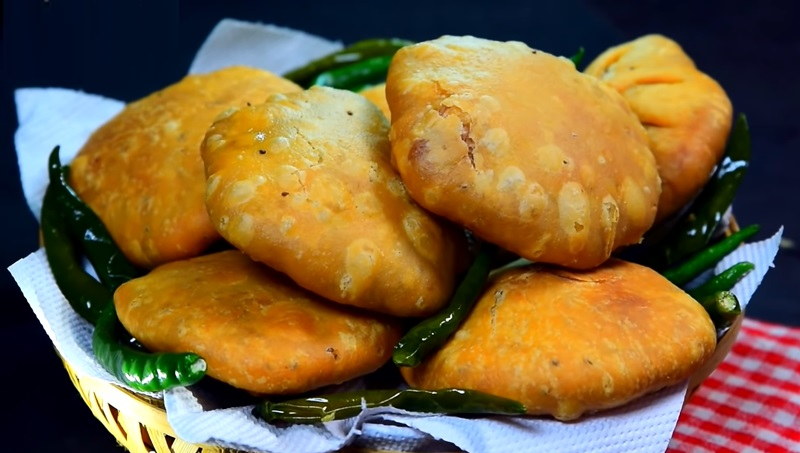
Kanda Kachauri is a popular dish in North Indian cuisine, specifically in the state of Rajasthan. It is a delicious and savory pastry made with a filling of spiced onions, known as "kanda" in Hindi. The pastry is made by kneading flour with ghee or oil to create a crispy and flaky texture. To prepare Kanda Kachauri, the onions are finely chopped and sautéed with a variety of spices like cumin, coriander, turmeric, and red chili powder. This mixture is then stuffed into the dough and rolled into small balls. These balls are flattened and deep-fried until golden brown and crispy. The end result is a mouthwatering snack that is crispy on the outside and filled with flavorful and fragrant spiced onions on the inside. Kanda Kachauri is often served hot with tangy and spicy chutneys like mint or tamarind. It can be enjoyed as a standalone snack or as a part of a larger meal. With its rich flavors and textures, Kanda Kachauri is a beloved dish that showcases the vibrant and diverse culinary traditions of North Indian cuisine.
Kadai paneer
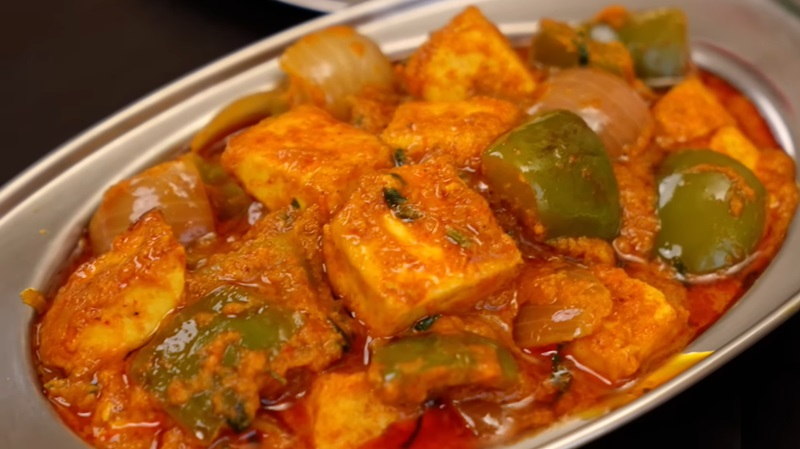
Kadai paneer is a popular dish from North Indian cuisine that is loved by vegetarians and non-vegetarians alike. It is a rich and flavorful curry made with paneer (Indian cottage cheese), bell peppers, onions, and a blend of aromatic spices. The dish gets its name from the traditional Indian cooking utensil called "kadai" or wok, which is used to prepare this delectable curry. The paneer is first marinated in a mixture of yogurt, ginger-garlic paste, and spices, giving it a tangy and spicy flavor. It is then cooked in a thick tomato-based gravy along with the bell peppers and onions. The spices used in kadai paneer include a combination of coriander seeds, cumin seeds, dried red chilies, and garam masala, which give the dish its distinct and robust flavor. The final touch is a sprinkle of fresh coriander leaves for added freshness. Kadai paneer is typically served hot with roti or naan bread, making it a wholesome and satisfying meal. Its creamy texture and spicy taste make it a favorite choice for those who enjoy Indian cuisine. Whether you are a paneer lover or simply looking to explore North Indian flavors, Kadai paneer is a must-try dish that will leave you craving for more.
Khoya paneer
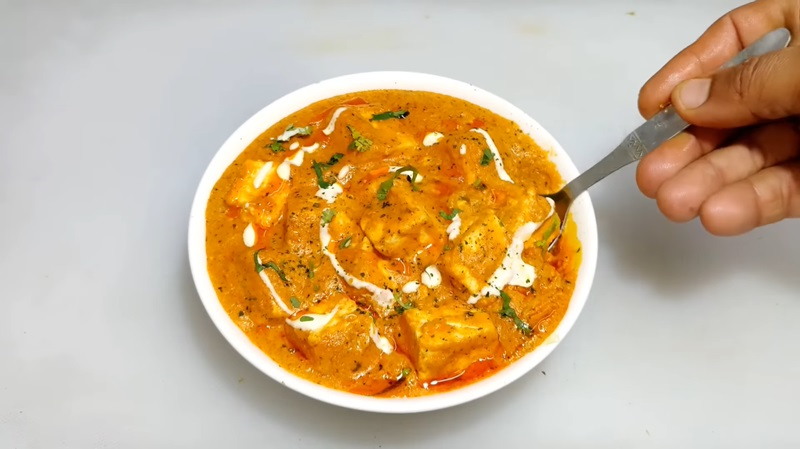
Khoya paneer is a popular dish in North Indian cuisine that combines the richness of khoya (reduced milk solids) with the creamy goodness of paneer (Indian cottage cheese). This delectable dish is a true delight for the taste buds and is widely enjoyed across the region. To prepare khoya paneer, the paneer cubes are first lightly fried until golden brown, giving them a slightly crispy texture. Then, a luscious gravy is prepared using a blend of aromatic spices such as cumin, coriander, turmeric, and garam masala. This gravy is further enhanced with the addition of crushed tomatoes, ginger, garlic, and green chilies, creating a harmonious blend of flavors. The highlight of the dish is the addition of khoya, which adds a velvety texture and a rich, creamy taste to the gravy. The khoya melts into the sauce, infusing it with a delightful sweetness and making it irresistibly indulgent. Khoya paneer is best enjoyed with naan or roti, as the soft bread perfectly complements the creamy texture of the dish. This flavorful and decadent North Indian delicacy is sure to leave you craving for more, making it a must-try dish for all food enthusiasts.
Chhota haazri

Chhota haazri is a popular dish served as a morning breakfast in North Indian cuisine. It is a delightful combination of flavors and textures, designed to provide a wholesome start to the day. The dish typically consists of a variety of small portions of different items, making it a perfect way to taste a little bit of everything. Chhota haazri often includes a mix of sweet and savory items. It usually features a selection of fresh fruits like bananas, apples, and oranges, providing a burst of natural sweetness. Alongside the fruits, you will find a range of traditional Indian snacks such as samosas, kachori, or parathas, which are stuffed breads. These savory items are usually accompanied by a tangy and spicy chutney or pickle to add an extra kick of flavor. To complete the Chhota haazri experience, a cup of steaming hot chai (Indian tea) is served. The tea is typically infused with aromatic spices like cardamom, ginger, and cloves, creating a refreshing and invigorating beverage. Chhota haazri is not only a delicious breakfast option but also a celebration of the diverse flavors and culinary traditions of North India. It offers a unique and satisfying way to start the day, leaving you energized and ready to take on whatever lies ahead.
Mutton pulao
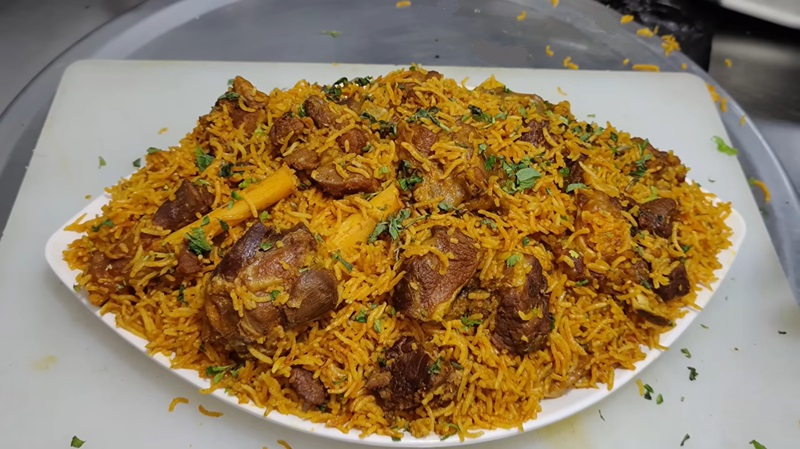
Mutton pulao is a delectable North Indian dish that combines tender mutton pieces with aromatic basmati rice and a blend of flavorful spices. This dish is a perfect example of the rich and diverse cuisine that North India is renowned for. To prepare mutton pulao, the meat is first marinated with a mixture of yogurt, ginger-garlic paste, and an assortment of spices such as turmeric, cumin, and garam masala. It is then cooked with onions, tomatoes, and additional spices until the meat is tender and the flavors are well-infused. Meanwhile, fragrant basmati rice is cooked separately and then layered with the cooked mutton. The dish is further enhanced by adding saffron-infused milk, fried onions, and fresh herbs such as mint and coriander. The layers are sealed and then cooked on low heat, allowing the flavors to meld together and the rice to absorb all the aromatic goodness. The result is a mouthwatering mutton pulao with tender, succulent pieces of meat intertwined with perfectly cooked, long-grained basmati rice. The dish is not only visually appealing but also bursting with flavors that are both bold and harmonious. Mutton pulao is often enjoyed with a side of raita (yogurt-based condiment) or a refreshing salad, making it a complete and satisfying meal for any occasion.
Bikaneri Bhujia

Bikaneri bhujia is a popular snack hailing from the state of Rajasthan in North India. It is a delectable and spicy treat that is loved by people of all ages. This dish is made from gram flour (besan), which is mixed with a variety of spices and then deep-fried until crispy. The unique taste of Bikaneri bhujia comes from the blend of spices used in its preparation. It typically includes a combination of black salt, red chili powder, turmeric, and asafoetida, which gives it a distinct flavor. The addition of a hint of tanginess with the use of dried mango powder (amchur) further enhances its taste. Bikaneri bhujia is known for its crunchy texture and is often enjoyed as a standalone snack. It can also be used as a topping or garnish on various dishes, adding an extra kick of flavor. It pairs well with a cup of hot tea or coffee, making it a perfect snack for tea-time. This beloved North Indian dish has gained popularity not only in India but also globally, with people craving its unique taste and addictive crunchiness. So, whether you are a fan of spicy snacks or simply looking to explore the culinary delights of North India, Bikaneri bhujia is definitely worth trying.
Manda roti
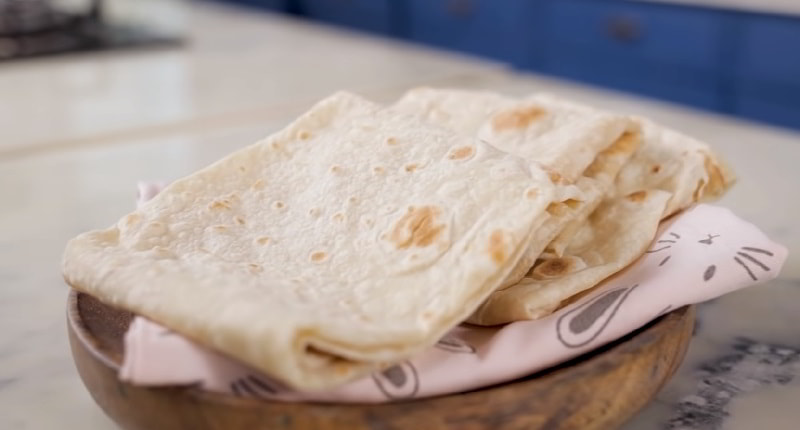
Manda roti is a traditional dish from the North Indian cuisine that is popular in the state of Himachal Pradesh. It is a unique and delicious dish that is commonly prepared during festivals and special occasions. Manda roti is a type of unleavened bread that is made with a mixture of wheat flour, ghee, and water. The dough is then rolled into thin circles and cooked on a hot griddle or tawa. What sets Manda roti apart from other Indian breads is its distinct shape and texture. It is folded into a half-moon shape and then cooked until it becomes golden brown and slightly crispy. The roti is best enjoyed hot and is often served with a side of dal (lentil soup) or sabzi (vegetable curry). The taste of Manda roti is rich and flavorful, with a slight hint of ghee. The crispy texture on the outside and softness on the inside make it a delightful dish to savor. The simplicity of its ingredients and the skill required to make the perfect Manda roti reflect the essence of North Indian cuisine.
Dal dhokli
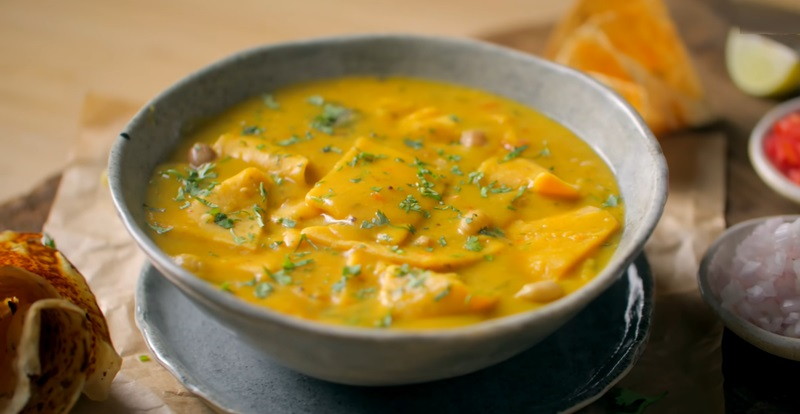
Dal dhokli is a popular and comforting dish from the North Indian cuisine. It is a one-pot meal that combines the goodness of lentils (dal) and wheat flour dumplings (dhokli). The dish is loaded with flavors and is a perfect blend of spices, lentils, and carbohydrates. To prepare dal dhokli, lentils are cooked with a medley of spices such as turmeric, red chili powder, and garam masala. The dough is made by mixing wheat flour, spices, and oil, and then rolled out into thin dumplings. These dumplings are then added to the simmering lentils and cooked until they become soft and tender. The result is a thick and hearty dish that is both filling and delicious. The lentils provide a rich and creamy texture, while the dumplings add a chewy and satisfying element. The spices infuse the dish with a burst of flavors, making it irresistible to the taste buds. Dal dhokli is often garnished with fresh coriander leaves and served with a dollop of ghee on top. It can be enjoyed on its own or paired with rice or roti. This wholesome and flavorsome dish is a favorite among many and is perfect for a comforting meal on a cold day.
Jhajariya
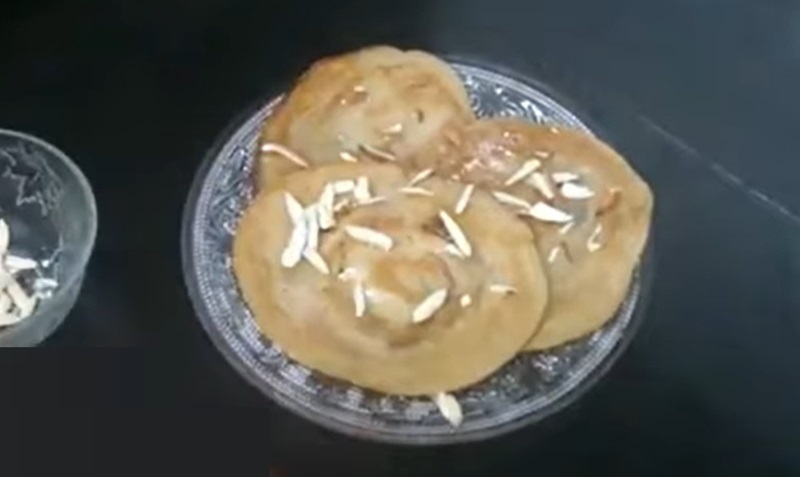
Motichoor ka Ladoo
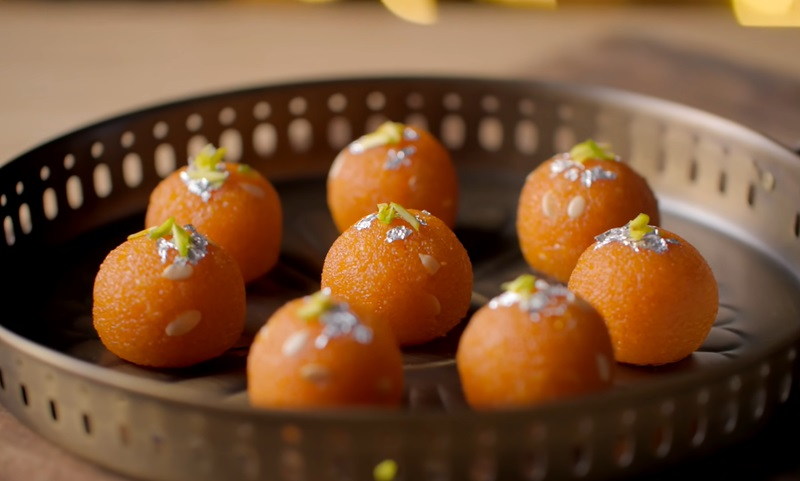
Katt Bafla
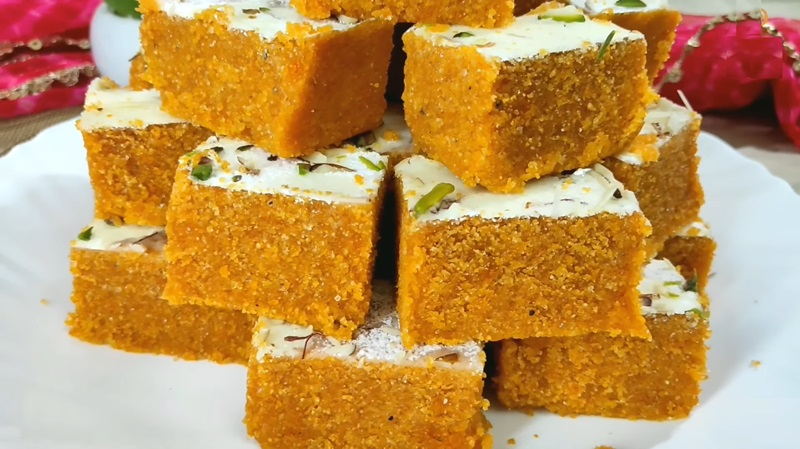
Punjabi bhathi

Arhar



